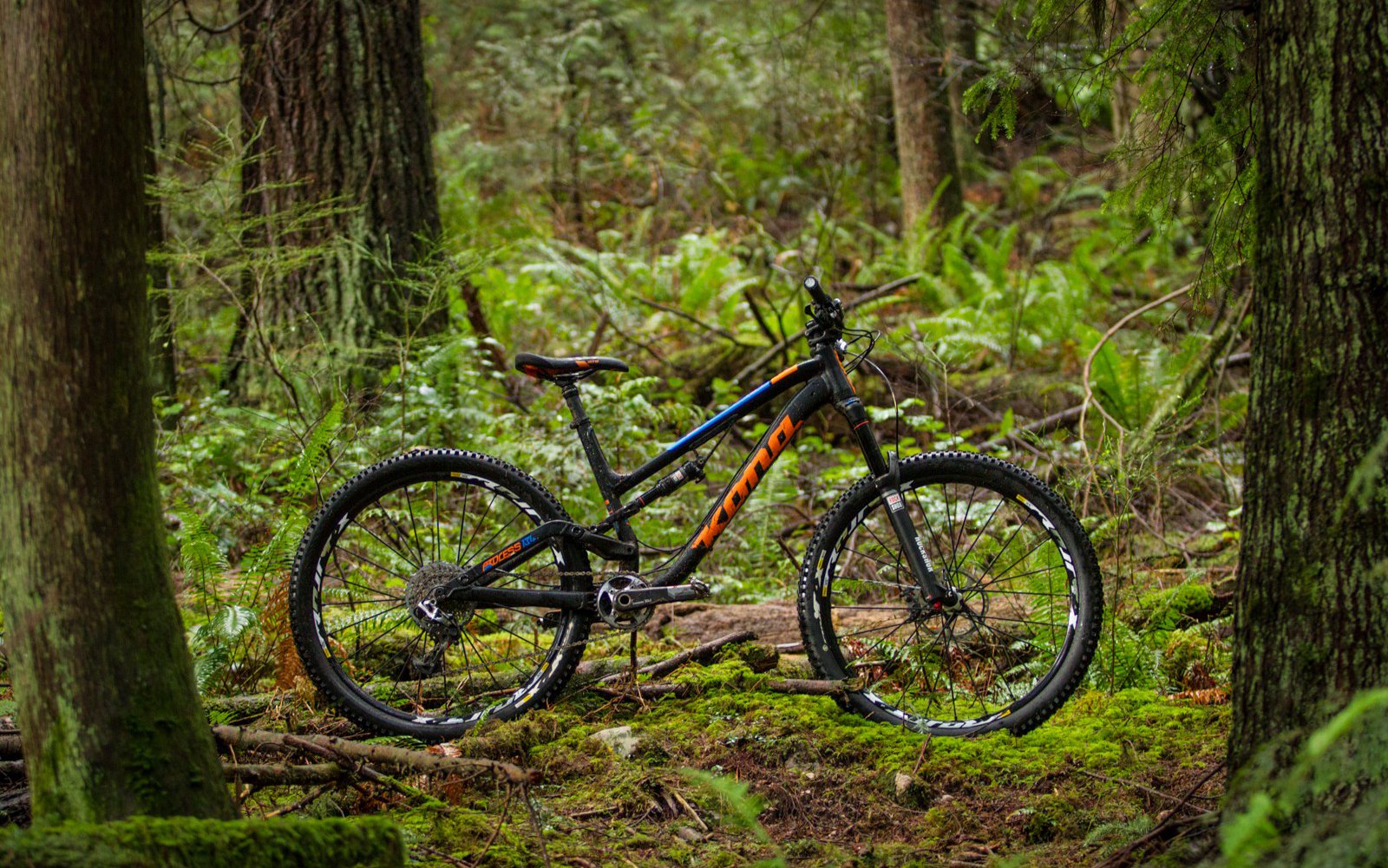
EDITORIAL | Part 1
Min-Max YOUR Mountain Bike | 2016 Kona Process 134 Supreme
Min-Maxing
There are a lot of ways to get from one place to another and the best way to get from A-to-B depends on a lot of factors. I've walked long distances when I just needed to do some thinking, and I've driven up the block to take an appliance in for repair. Often we measure travel efficiency in terms of how fast we can get a place v. how much it costs to get there, but that's not always the case. Sometimes a train ride is the slowest, most expensive, and most spectacular way to get where you're going.
The concept of min-maxing is often laid out as the best performance for a given price. Plugging a high-performance damper into the OE fork that came with your bike, to get Factory-level performance for a significantly smaller investment would be one example, or buying an all-steel Deore M6100 cassette that will last longer and deliver the same great HG+ shifting as the lighter and more expensive SLX or XT versions. Another example is CODE R or Magura MT5 brakes that provide the stopping power and modulation of their much more expensive siblings minus some bells and whistles you probably don't need.
But there are other ways to measure the best min-maxed mountain biking scenario for you. The greenest option is riding what you already own and that will often be the least expensive as well, but when it comes to riding toys in the forest, fun is of course the most important metric. Or, is it speed? The easy answer is, it depends. In this series we'll be looking at used bikes from various eras, and examining what it would cost to make them perform close to, or even better than, a brand new bike.
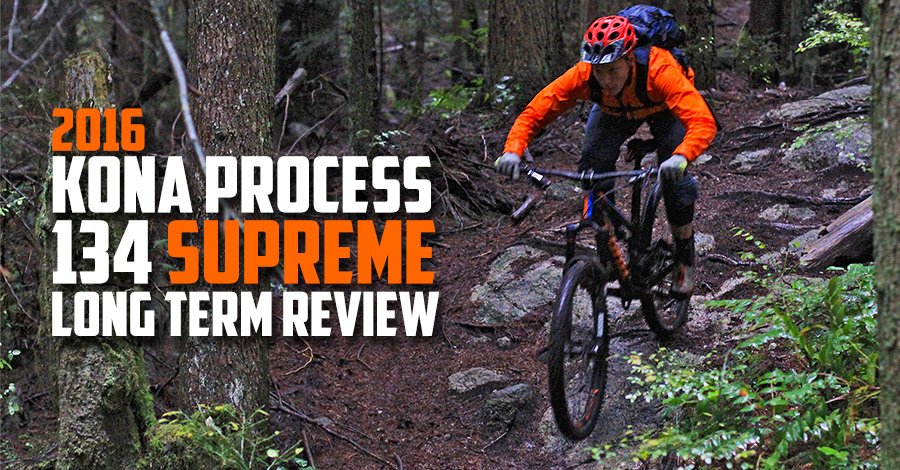
I loved this bike. The same generation of Process 111 and Process 153 also own a piece of my heart; they looked unique, the frame drove the horizontally mounted shock incredibly smoothly, they had big, well shielded, bearings and the tall stack heights paired well with the new longer reaches. All Kona needed to do was bend the downtube a bit so a water bottle would clear with ease in all sizes. Photo: Cam McRae
Buying The Bike You Already Own
I've been wanting to write something fresh about this particular model of bike for quite a while. It's a size large 2015/16 Kona Process 134 Supreme, and it's the very first bike I reviewed for NSMB.com. At the time it had the longest Reach of any bike I'd spent any time on, at 460mm. At first it was 'WOAH' but after a couple rides it didn't feel overly long, even with the 74° seat tube angle that is both perfect for me and slack by today's standards. I attribute that to the fact that Kona figured out, right out of the gate, that Stack numbers needed to grow substantially along with Reach. Where a lot of companies were pushing out size large bikes with 100mm headtubes on similar travel rigs, this Process had a 130mm.
When we started talking about this series, about min-maxing your bike, this was the only place for me to start. I never owned an original Process 134, but if I was hitting the used market tomorrow for myself, or for my wife, this is where my search would begin; big bearings beautifully shielded for multiple years of use, no weird proprietary parts, external brake routing, and highly adaptable for that adult-Lego fun factor. I'll accept being called out for the 425mm chainstays, which are some 15-25mm shorter than my stated preference, and note this is about building the best, most fun bike, on a budget. This is not a musing on my perfect dream bike at any cost.
I've always regretted that I didn't buy the Process 134 after the review was done so let's pretend I did buy this 134, and that I still have it these seven years later. Today I'll be looking at the stock bike and talking about the upgrades I would consider investing in to keep it up to date, rather than spilling a bunch of treasure on a new bike. I'm assuming it's in good shape and well maintained with regular brake bleeds, suspension services, and frame bearing replacements as needed. This isn't a reach because I can imagine myself picking up this bike for the right price and doing exactly what I'm talking about here.
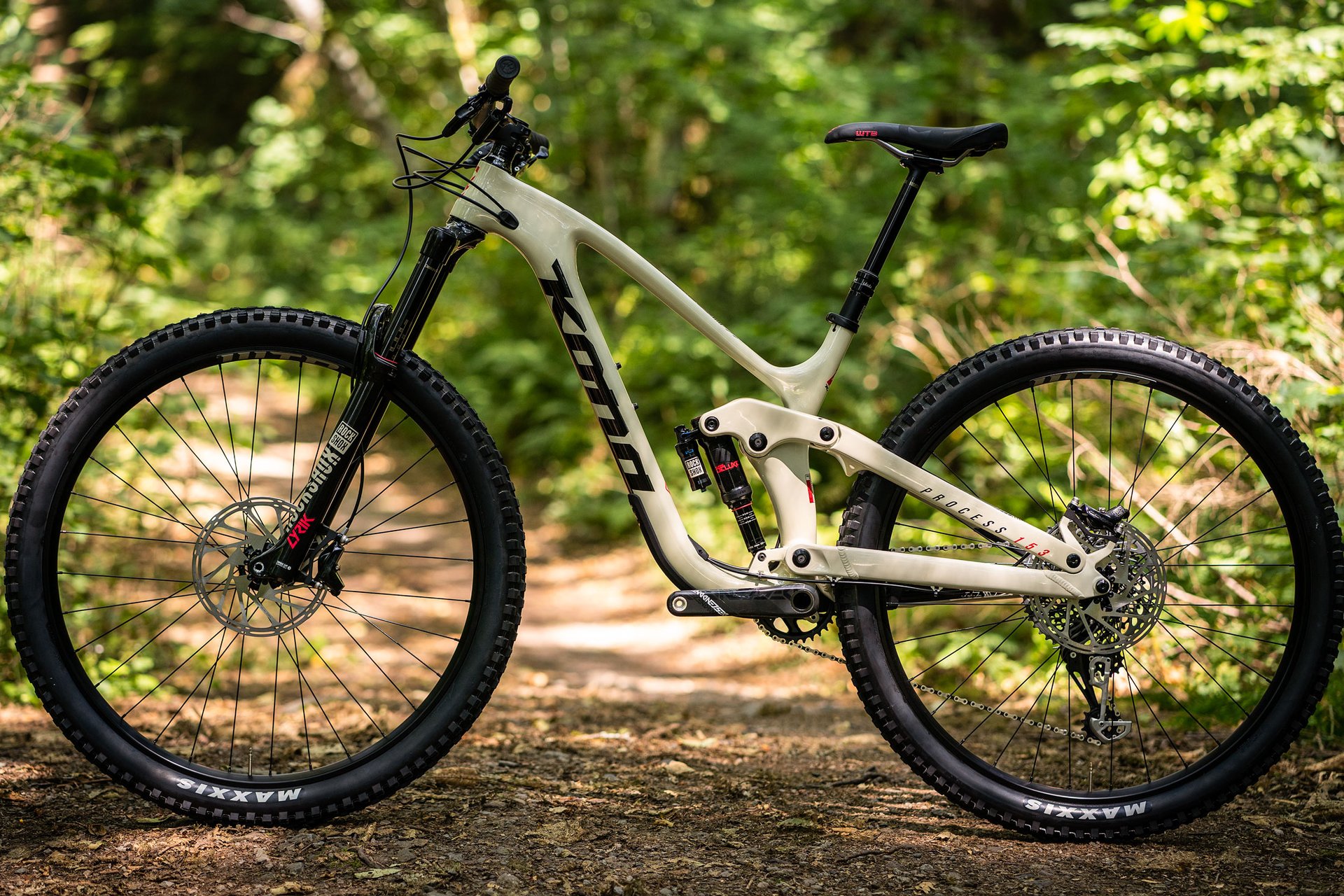
Kona's current Process 134 lineup is available in carbon fiber and aluminum frame options. It has a more traditional Kona suspension layout that can be traced back to the 90's. Photo: Kona
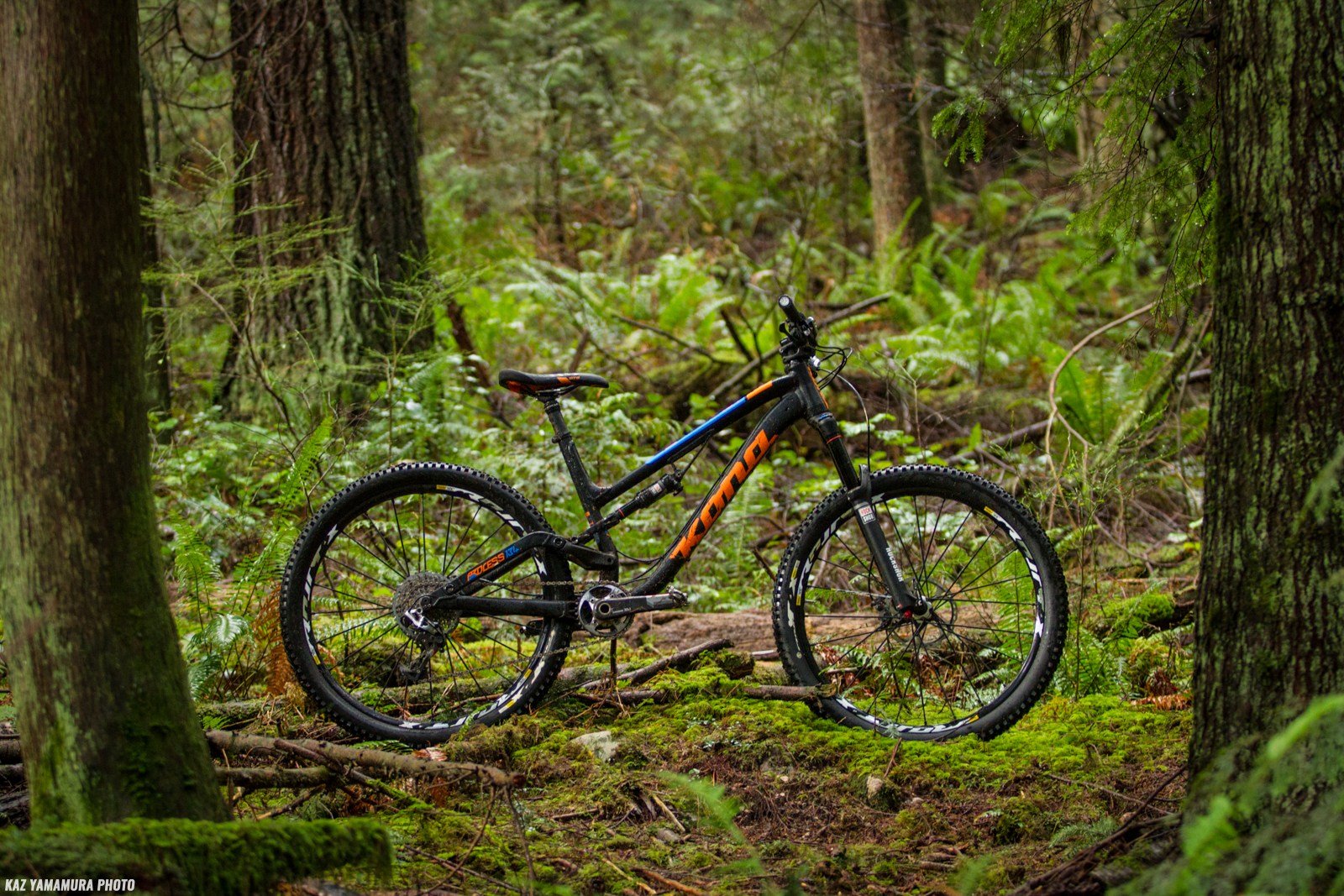
While there were some running changes to geometry and tubesets, the Process 134 I'm looking at today came from a relatively brief, 2014-2017, period in Kona's full suspension development history.
The process going forward, will be to collect some actual photos and build lists from NSMB readers and then do the same. The goal is to put together some real examples of folks choosing to Buy The Bike You Already Own. Whether it's a three-year-old Rocky Element that needs to be beefed-up for a change of primary riding location, a 2001 Heckler you're trying to sort out on the cheap for a new rider or your kid, or anything in between. Make contact with a breakdown of what you have and some photos and if I think it's something I can help with I'll take a first crack at it.
I say a first crack, because the NSMB.com readership has no end of experience and opinions, both in terms of keeping their bikes running and also in choosing when to abandon ship for a new bike. A lot of the time the comments from our community go as far or farther than the articles in providing entertainment and information. Deciding whether to roll up your sleeves or grab the proverbial gas can will also depend on your access to tools, time, mechanical aptitude and wrenching experience, so I'll ask folks to keep that in mind when sharing their own ideas. Hopefully we can have some fun and keep some older machines running with current bikes for less money.
The 2015/16 Kona Process 134 Supreme
Plying the used market for a Process 134, I'd be specifically looking for a 2017 model. That year the Reach on the Large grew 1.5cm to 475mm which gets it pretty damn close to my current preference. But I thought it would be more fun to start with a bike I've ridden, if not owned, so the identical 2015/2016 model years is what I'm going with. That means that, depending on the handlebar I'm running, I would have already bounced the stock 40mm stem up to 50mm or 60mm. I would have also replaced the handlebar a couple of times over the last seven years. I'm certain I would have replaced some other parts too whether due to wear or the odd bought of upgradeitus.
One of the things that was truly special about the 134 SE was the boutique build delivered on the aluminum frame. Originally these build kits were supposed to come on the first generation of Kona's carbon Process bikes. But, with the fantastic-plastic versions not arriving until the return of the traditional horizontally-shocked Kona full-suspension silhouette in 2017, they found their way onto the excellent aluminum chassis. The value may blow your mind: SRAM XX1 drivetrain, Shimano XT brakes, dropper post, RockShox Pike RC3, and custom wheels with Hope hubs for 6000 CAD | 5500 USD.
Everything you ever wanted in a trail bike. Ride across huge tracts of wilderness. Bomb your favorite backyard descent. Race enduro. Race XC stage races. Do it all with confidence, comfort and speed on the Process 134 Supreme. The most versatile model in our Process platform, outfitted with the best components. Let nothing stand in your way." - Kona Bikes
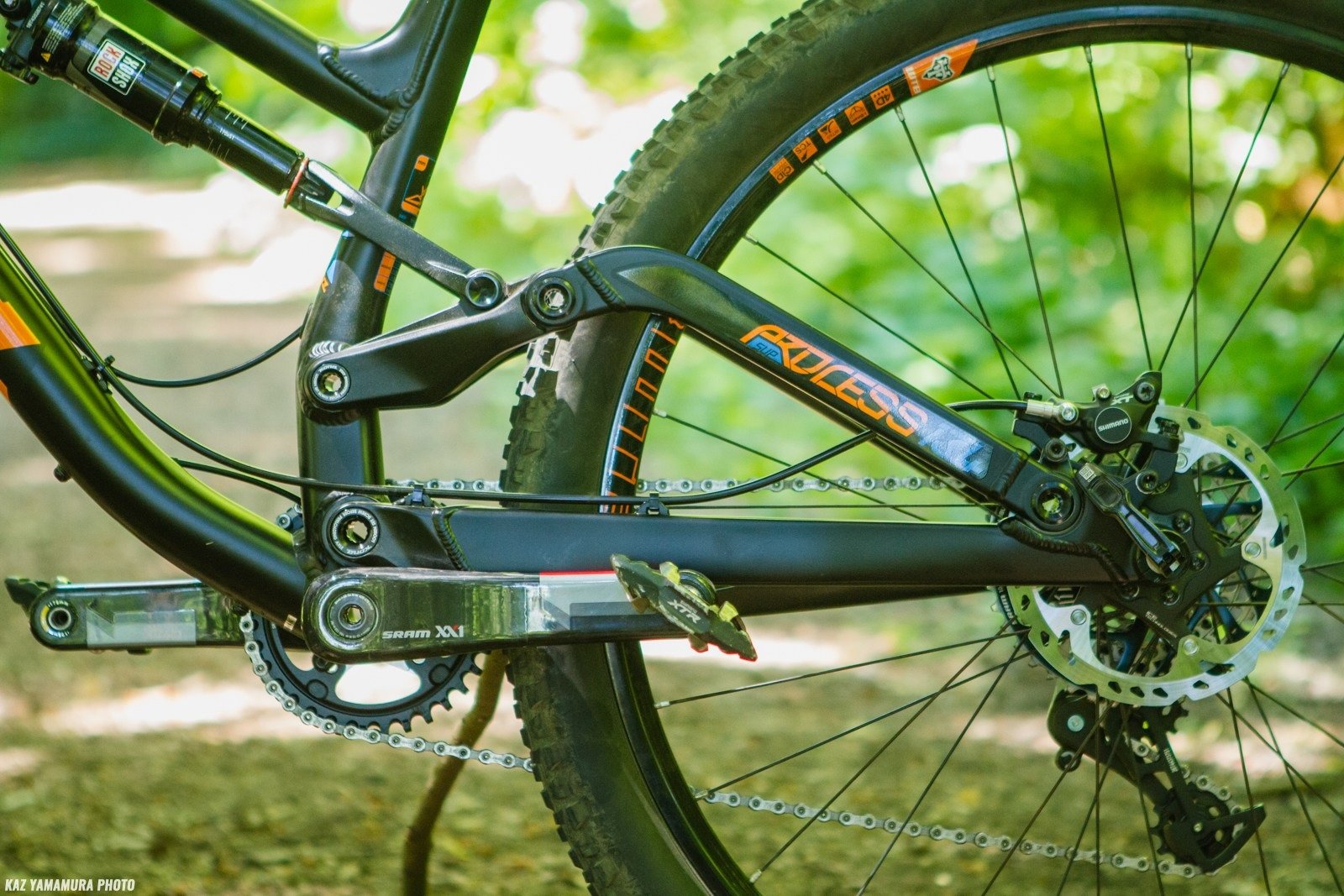
If any carbon cranks would still be kicking after seven seasons it's these XX1 units with their massive aluminum insert. I'd prefer a 24mm or GXP axle with the Process' pressfit PF92 BB so assuming they're still kicking I'll install a fresh bottom bracket and keep riding them.
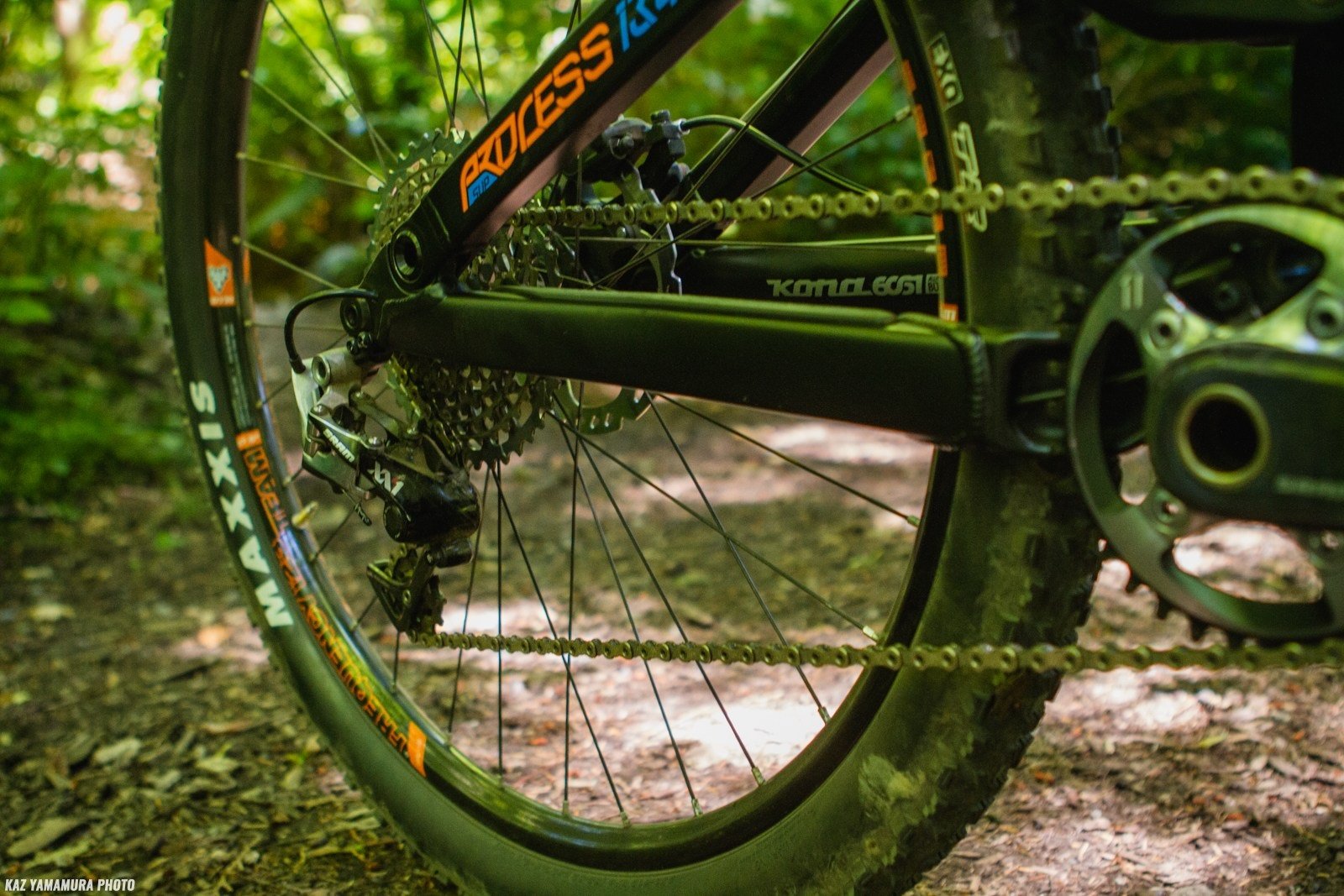
The XX1 cranks use a four-bolt spider but it's attached using SRAM's standard 3-bolt mounting pattern so I'd be replacing it with a direct mount ring. I'd go 28t for the ring so I can stick with a 42t cog and get all the gears I'd need.
Wheels & Drivetrain
Hope hubs are not my first choice for a few reasons. Key among them is the big hunk of plastic behind the freehub driver they call a 'labyrinth seal.' Personal preference aside, you're not going to hear any complaints from me seeing Hope come as spec. Hope does a fantastic job of supporting hubs going back forever, so I know it would be easy to come across any parts I need for the ones on the Process. I'd certainly consider jailbreaking the rear hub by buying an HG driver, and Wolf Tooth makes a very clean Boostinator kit for the front hub if I was to upgrade the Pike.
If the WTB Frequency i23 rims were still kicking I'd be looking to upgrade them to something wider. I'm hemmed in a bit by tire clearance in the back and will be running somewhere between a 2.4" and 2.6" tire so an i30-to-i35 rim would be perfect. In the front I'll be running a 2.6" tire minimum and would like the option of a 2.8" so an i35-to-i40 makes more sense. The big question is whether I'll mullet the bike or leave it with dual 27" tires and I'll talk more about that in a minute.
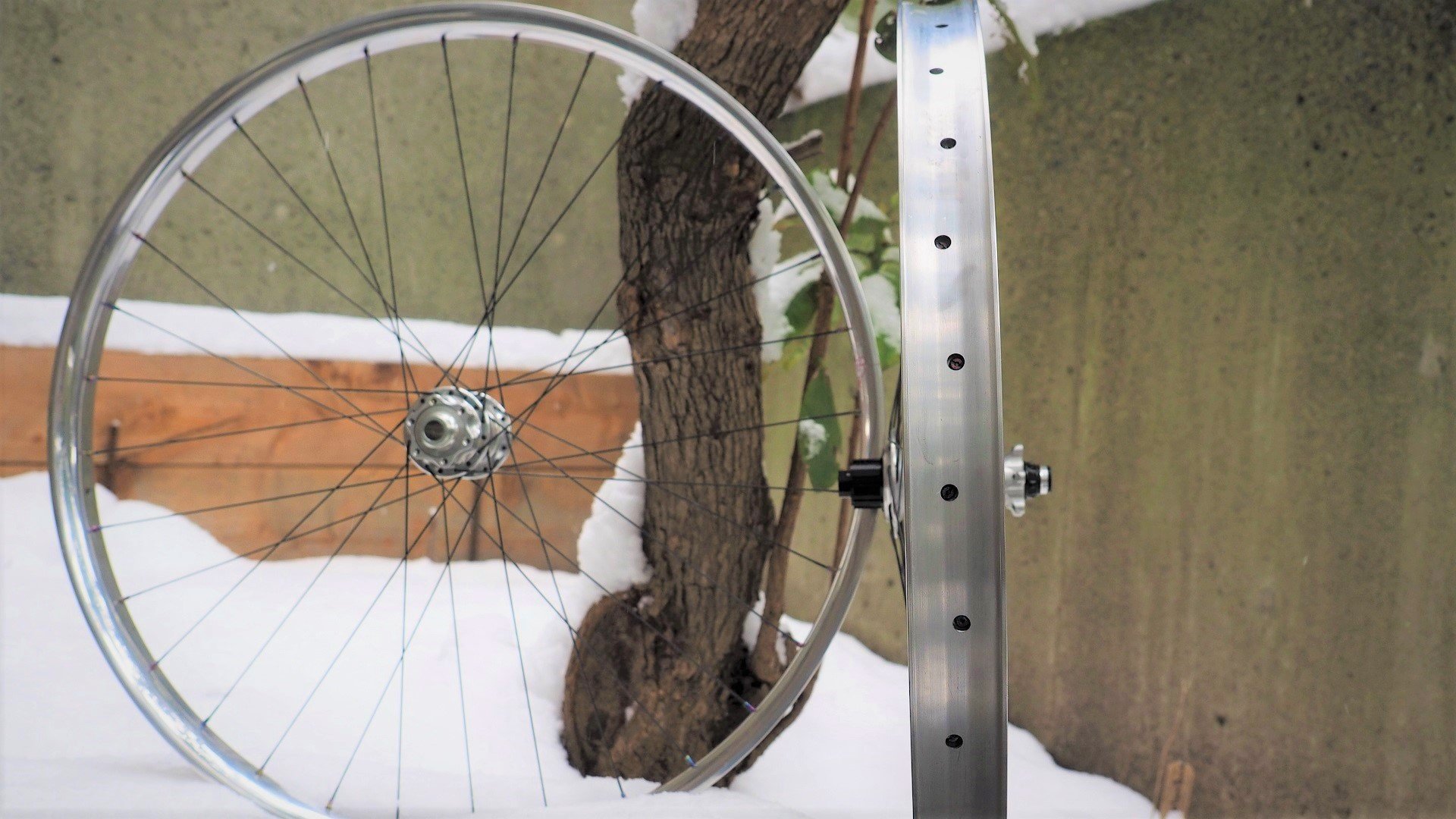
The '15/'16 Process 134 SE's stock Hope hubs are fully supported and worthy of fresh hoops. If I'm feeling flush I lean towards the USA-Made Velocity Dually or Blunt rims for the added value of supporting a small manufacturer doing it in North America. Photo: Andrew Major
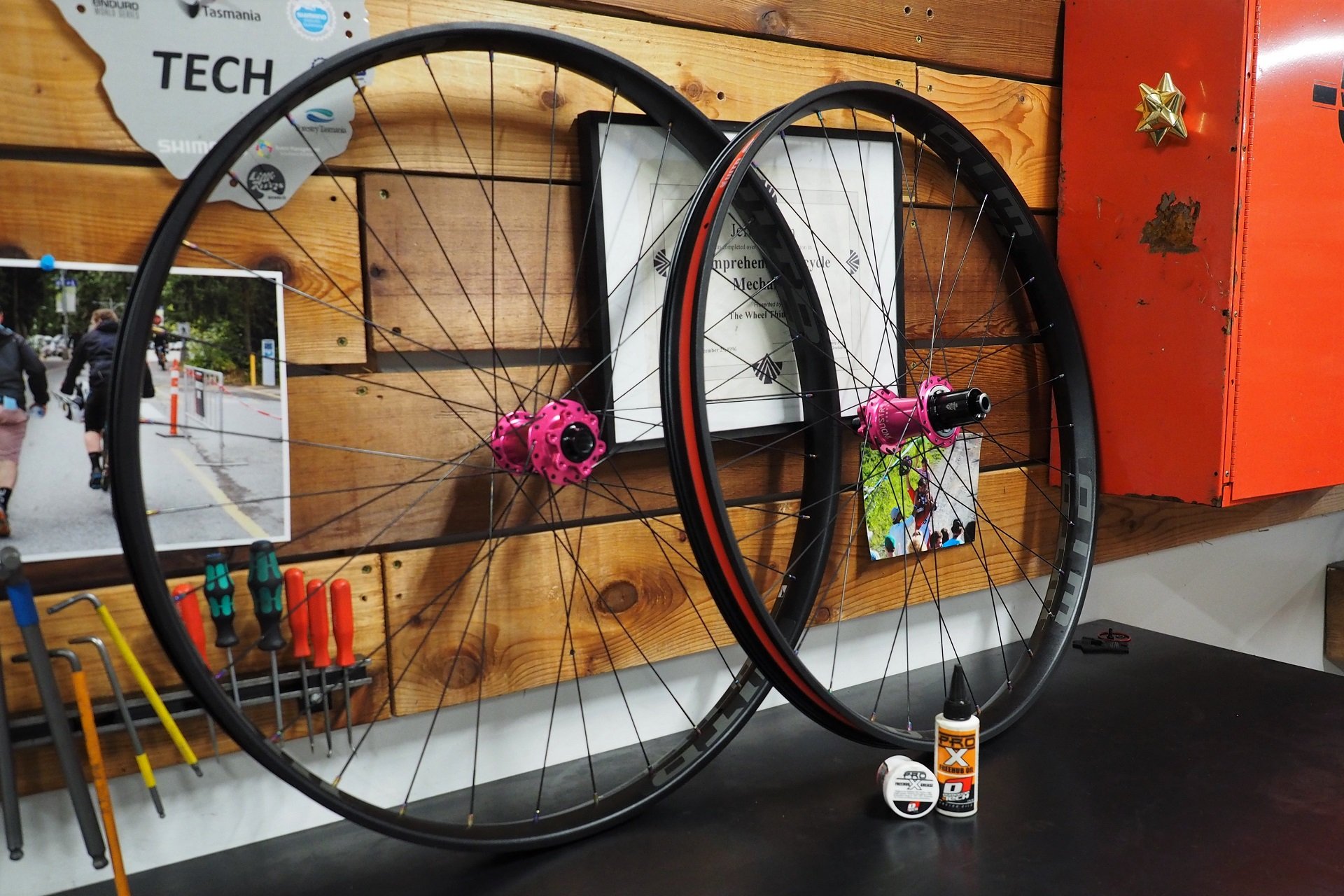
If I'm going full min-max I often find myself recommend WTB's KOM rims which also have angled spoke holes like the Velocity options. Either way, I'd be running proper tough tire inserts so why not go with quality aluminum hoops. Photo: Andrew Major
My preference is aluminum rims and CushCore inserts. Depending on my budget and how strongly I'm feeling about domestic manufacturing on the day I order, I might go after the USA-made Velocity Dually and Blunt. If I'm feeling a bit more skint, I like WTB's KOM rim lineup. Over time this might get a little redundant, so I promise I won't mention CushCore more than once per article.
Fresh rubber is a must. I purposely haven't made a recommendation because, more than anything on a bike, tires are location specific. I'd probably do something silly for the Process 134 like put a 2.4" semi-slick tire on the rear and an aggressive traction-over-rolling 2.6" or 2.8" tire on the front. I have friends who'd sensibly mount up a pair of 2.4" DHR II tires and never look back.
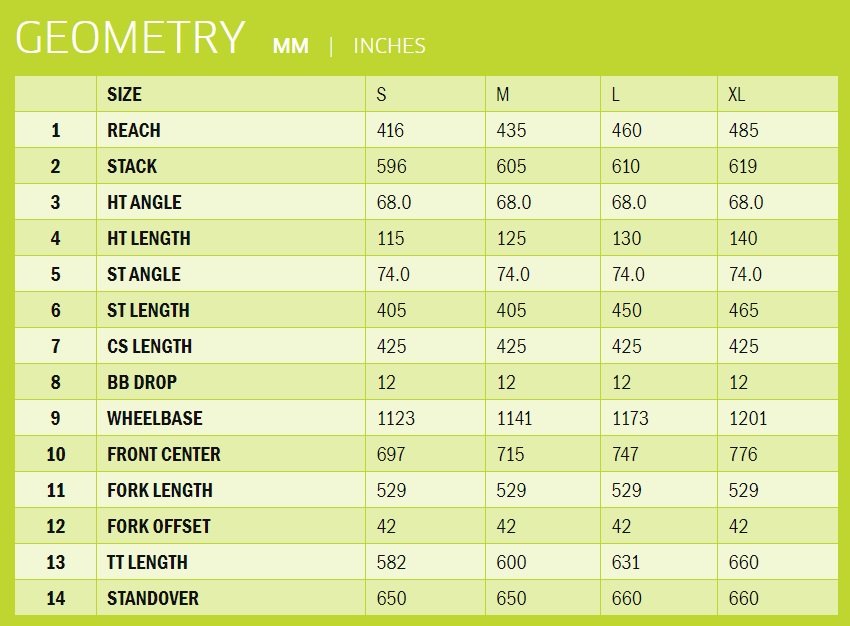
Stock geometry for the 2015 and 2016 Process 134 Supreme.
Drivetrain upgrades are going to depend on what's worn out but let's assume the chain, cassette, ring, and rear derailleur are all punched. I love-love that 11spd XX1 shifter so I'll mate it to a fresh SRAM Eagle rear derailleur and run that setup, which also gives me the option to run a wider range cassette if I want. I can make an argument for GX or XO1 when it comes to the derailleur. For an 11spd cassette that fits an XD driver I'll look to SunRace and their CSMX9X. The cassettes available as a 10-42t or 10-46t and are all steel except for the lowest gear. I'd be tempted by the 10-46t mated to a 28t ring so I'd generally top out at the 28x40t, for the improved chainline and enhanced life, but with the 46t left as a bailout for long rides.
The stock crankset has a four-bolt spider but that's mounted to the arms using SRAM's 3-bolt mounting standard, so it's easy enough to swap that out for a direct mount ring. If it was a hardtail I'd go with an oval 28t from Wolf Tooth, but for a multi-speed full-suspension bike I usually would go local with a 28t from North Shore Billet. I'll tie it together with a fresh SRAM 1171 chain. It's quieter running and smoother shifting than their cheaper 11spd chains and, in my experience, lasts as long as higher priced Eagle chains. If I can't find an 1171 due to parts shortages an XO1 Eagle chain would mate just fine with my 11spd system as well and in my experience they outlast GX Eagle chains by enough to justify the price difference.
Suspension
Let's say I've managed to limp the stock RockShox Pike and Monarch rear shock along to this point. Or, if I'm buying a used Process 134 with low hours that those parts are still installed. The obvious min-max choice, if the chassis are still in good working order, is just to get them fully serviced and keep riding but that's not what I'm doing here. It's not just about keeping a machine running, it's about making enough positive changes to the performance package that I cure my lust for a new rig.
First up is the rear shock, and there's only one option for me which is Cane Creek's DB Inline Coil. The Inline coil shocks are very reliable, fully externally tuneable - no re-valving needed, ever - and a bargain relative to their performance at 525 USD | 670 CAD, before a spring. I generally prefer the lower maintenance and increased reliability of a coil shock and in the case of the 2014-2017 Process bikes I've ridden with coil shocks, the performance has been excellent regardless what brand is installed.
So why the Cane Creek or any other option? On a size large Process 134 frame the lack of reservoir with the Inline architecture means that I can mount a Fidlock bottle within the front triangle. Yes, an expensive, low volume, solution but I'm happy enough with a bladder in my pack for long rides and this would get me through shorter loops. Actually, with their being water sources on the North Shore most of the year, packing some Aquatabs to cover me when I'm extra thirsty would be fine.
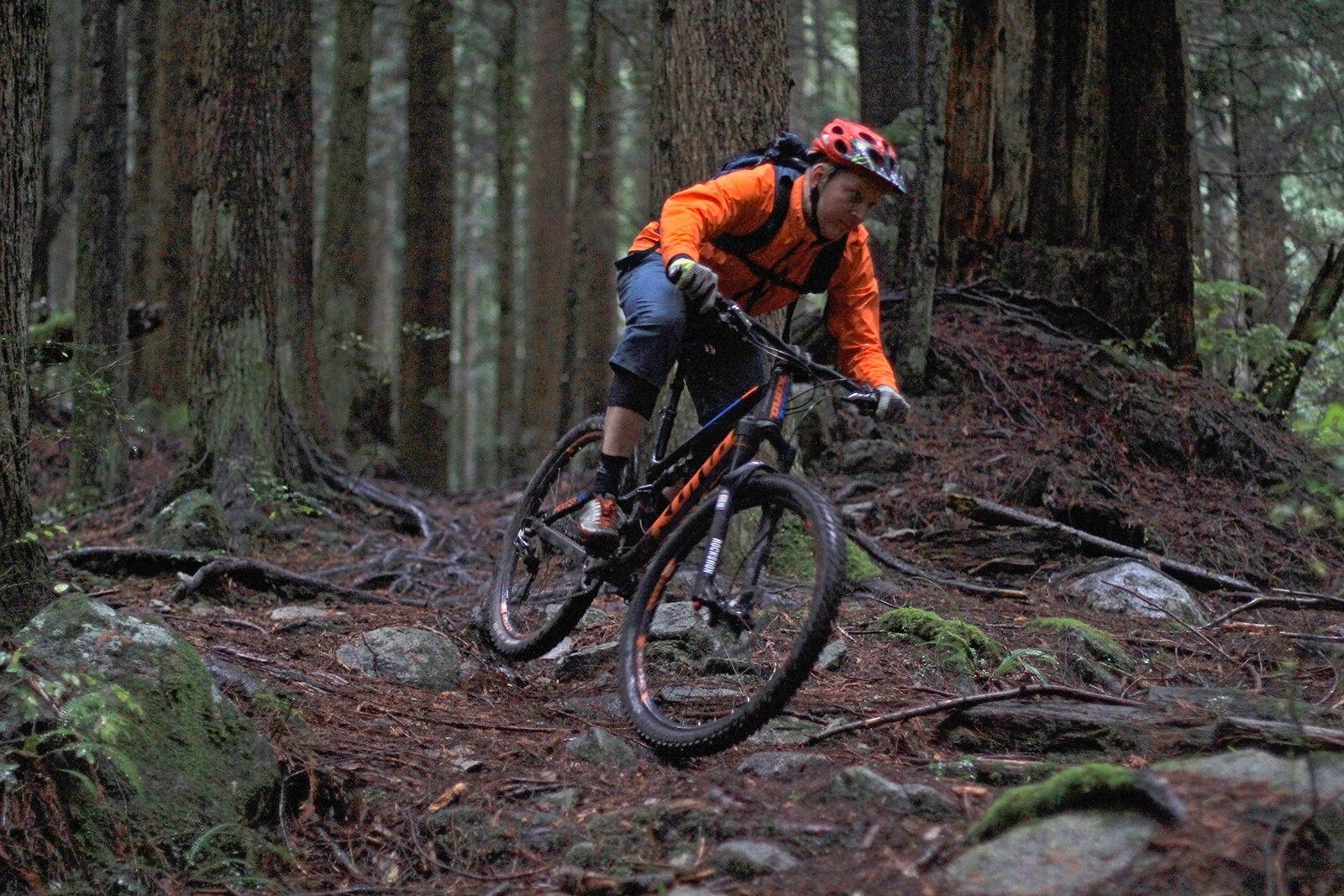
I'd be looking for a Cane Creek Inline coil shock for the rear. It would maximize performance while still allowing for some creative in-the-front-triangle hydration transportation on the size large. Photo: Cam McRae
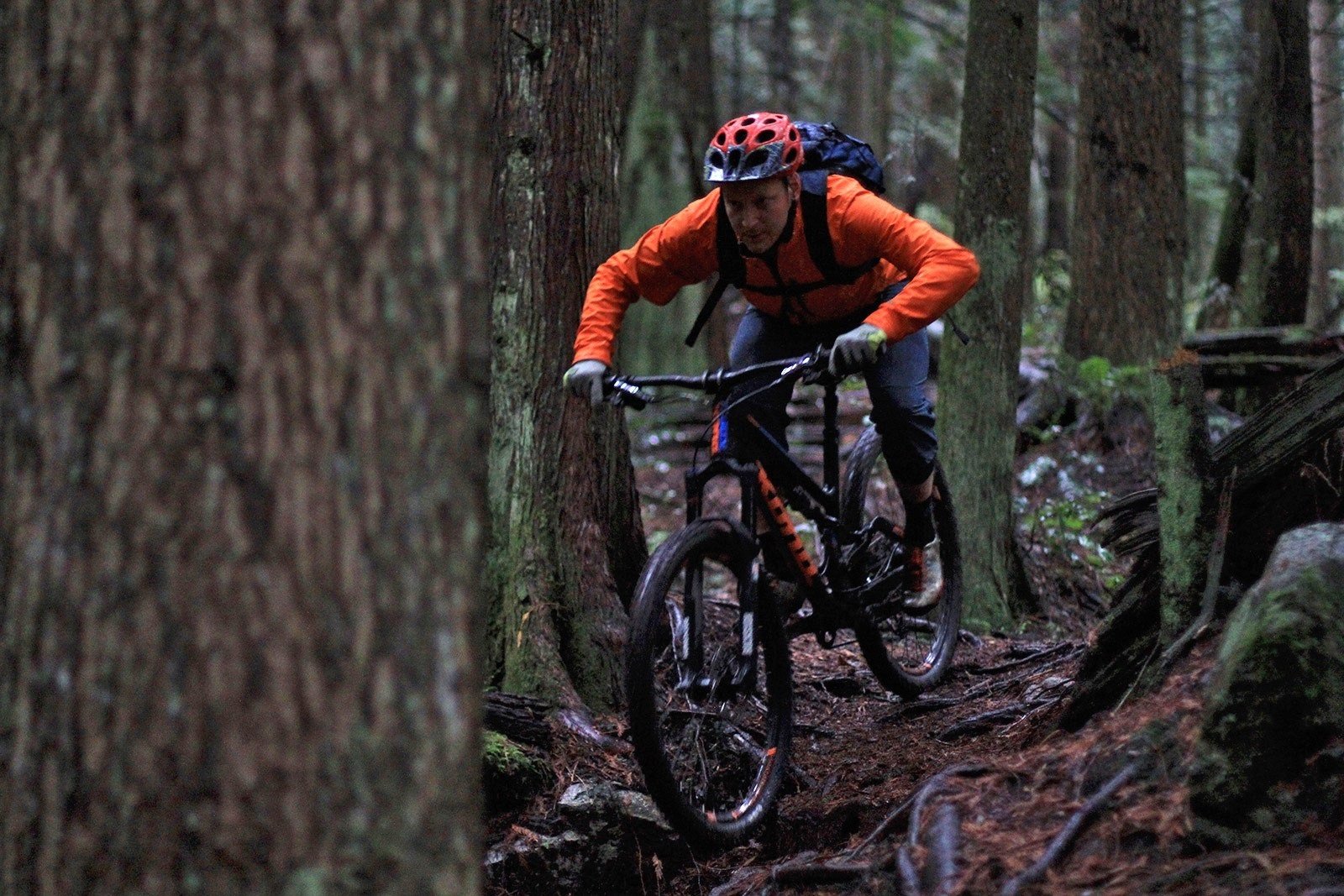
In the front the only thing I know for certain is that a -2° angleset would be getting installed. That would either be mated to a 140mm travel fork with a 29" wheel for a mullet adventure, or if I stayed with dual 27" hoops then I'd install a 160mm travel fork. Photo: Cam McRae
Wait, I'm easily over a grand and a half already between a rear shock, rims, and tires. Is this really min-maxing? I ask myself what a 2014 Process 134 SE is going to worth on the used market, look at the cost of an equivalent machine when even an NX-equipped aluminum Process 134 DL is 5K CAD, and I figure I have some room to make some actual upgrades while still saving a pile of cash. The CCDB IL Coil is nicer, in my opinion, than the shock I'd be getting on a 9K CAD Process 134 CR/DL, so heck yes I'm creating performance and value here.
My next big purchase is a new fork since I'm building my rig into something that can compete with the fresh bike I'd be buying otherwise. The ground-to-crown height of my new fork is going to be longer than the 140mm Pike as at the same time I'll be installing a -2° Angleset from Works Components or Wolf Tooth and I find that change works most awesome with a taller fork & wheel at the same time. For folks who need their suspension to match, a Cane Creek Helm would be a great choice here. I could do that, a Manitou Mezzer, a SR Suntour Durolux EQ, or any chassis that will clear a 2.8" tire on an i40 rim. I like my fat rubber, at least as an option.
The biggest choice here is whether to mullet the bike with a 140mm 29'er fork and a 29" hoop or whether to stick with dual 27" wheels and bump the fork travel up to 160mm. My mullet/MX experiences on full suspension bikes have all been winners to date so I'd be going the mixed-wheel size route to get the extra rollover ability. I have no concerns with mix-matching travel numbers on the Process though, as it feels bottomless, so I have no beef with anyone who'd rather keep running dual 650b hoops.
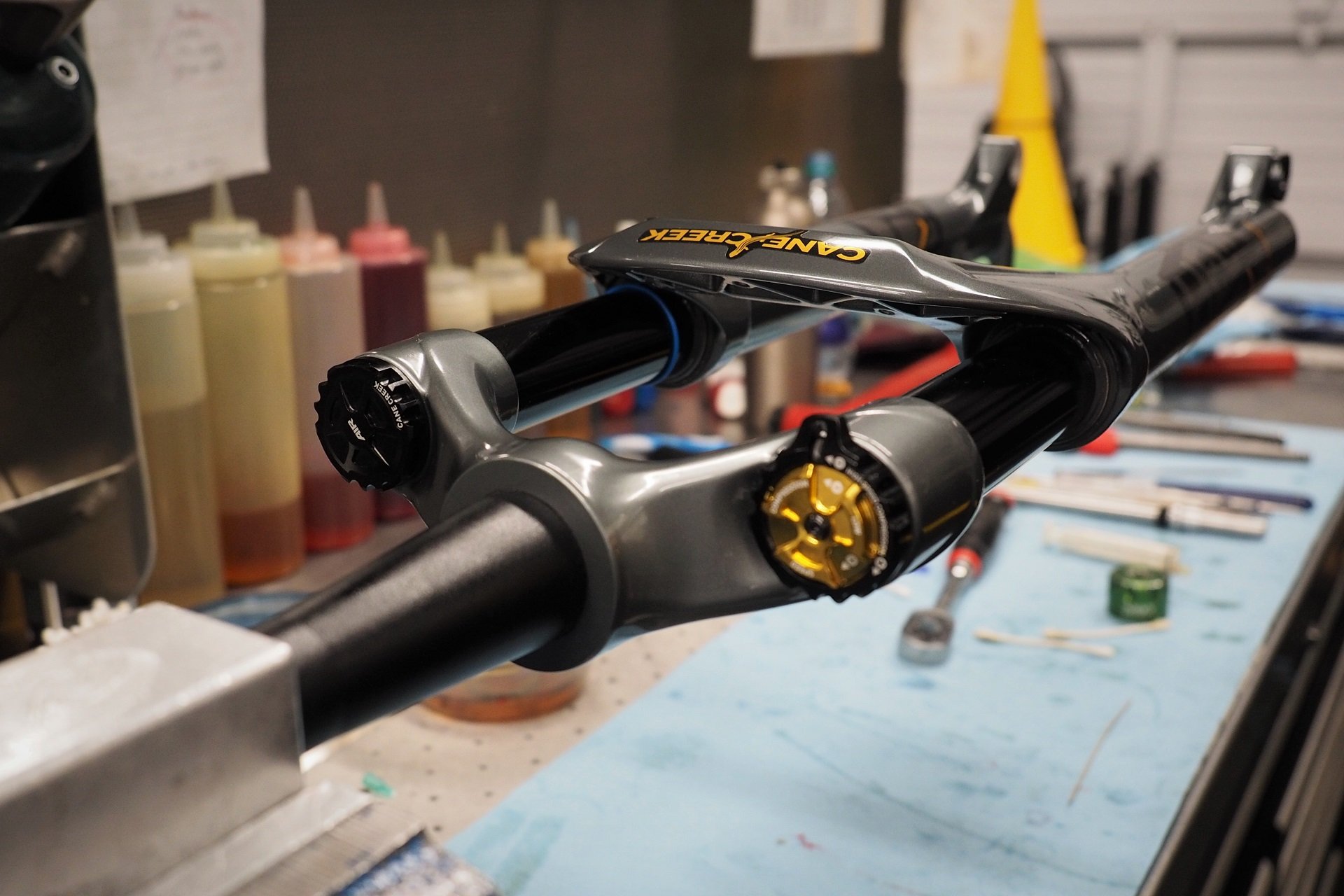
For those that need their front and rear suspension to match, the Cane Creek Helm is a great compliment to the DB Inline Coil shock I'd be installing on the back of my Process 134. It's a very easy platform to travel adjust as well (with included clip-on spacers) for folks that would like to experiment with over-forking their bike without buying a bunch of air shafts. Photo: Andrew Major
Brakes, Cockpit, Dropper Post
If your 2015/2016 Process 134 is still running the stock handlebar then you're due for a replacement anyways. Mine is going to absolutely be aluminum. I don't think I'll ever run another carbon bar - and it's going to have between 12° and 16° of sweep and be cut to between 760mm and 780mm of length depending on the sweep, the head angle, the general fit and how stable it rides between the wheelbase. There's not a right answer when it comes to bars and I'm an advocate of trying different things - especially when it's free because you're due for a new bar anyway. For me the Process 134 is going to have an SQLab 30X bar in the mid-rise and a 50mm or 60mm NSB Overlord stem, in 31.8, depending on the sweep I choose.
Chances are I've already replaced the POS KS Lev Integra years ago, so it may not need to be replaced again but,it probably also isn't as long as I'd like. I'm that text book rider who was fine with a 125mm dropper until I tried a 150mm, then the same with that until I tried a 170mm dropper post. Well, except that I after trying longer I'm happy in the 170-180mm range. The large Process 134 has a tall seat mast so at 450mm for the seat tube I'm going to choose a One Up dropper post for its most on the market drop for a given length. I should be able to run it at a full 180mm extension on the large, but if not I can easily lower it to 170mm if its a game of millimeters.
If the Process had come with SRAM Guide brakes to match the drivetrain then they would be fully rebuildable at this point. I'd still be upgrading to something with more power but I still think it's awesome that with a fully rebuildable system like the SRAM, Formula Cura/Cura4, or Hayes Dominion I can take an old brake and make it good, if not as good as new, again. There's a huge range of prices and preferences with brakes so I'll leave that open here. I will note though, that if a forward-thinking, power-hungry, Kona product manager had gone with CODE brakes for the spec then out of principle I'd rebuild them and ride them instead of replacing them.
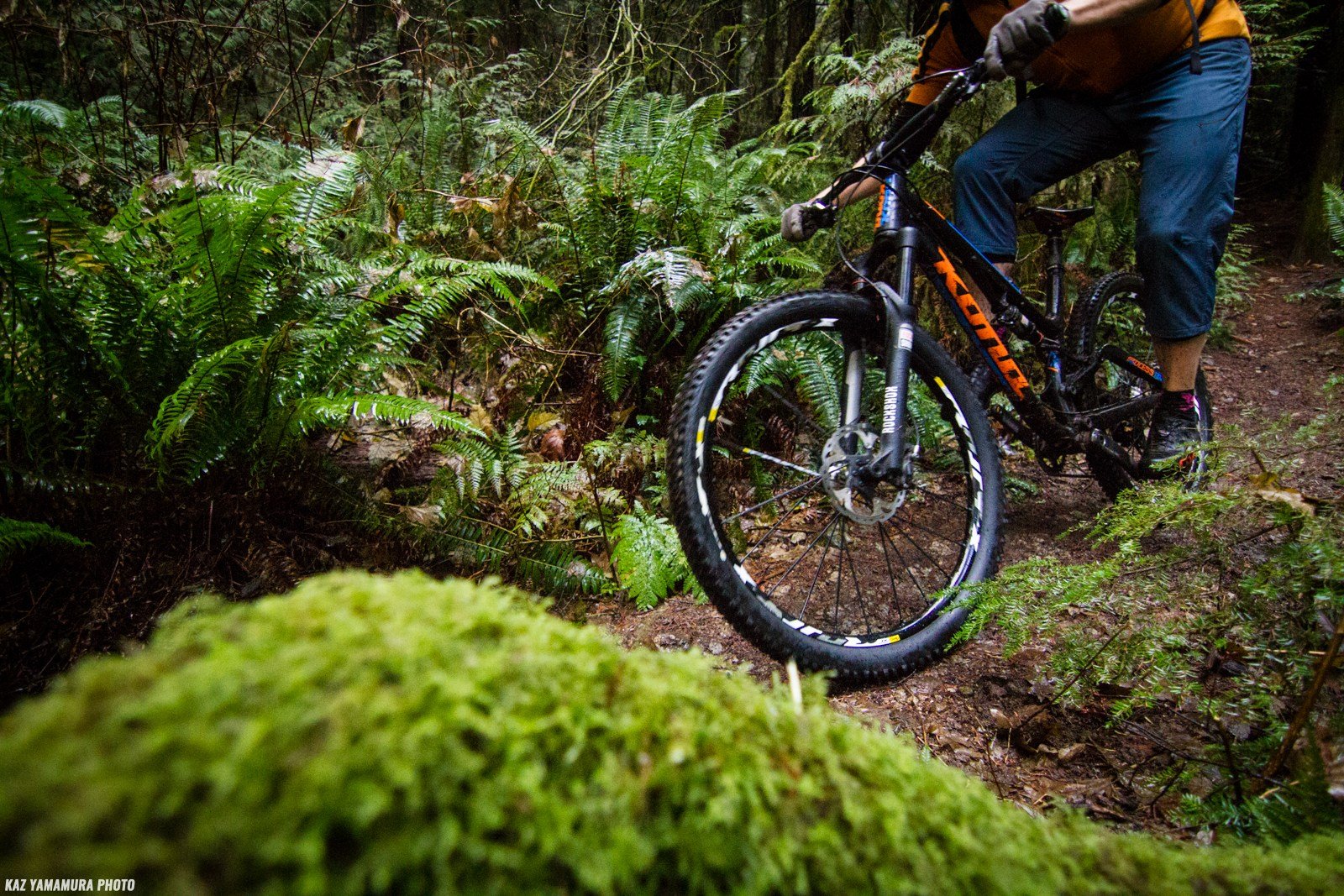
Before I started always wearing knee pads, I used to love riding in 3/4 shorts. Now they're just for commuting. I also stopped clipping-in. As old as this photo seems, I think I'd still be happy riding - an updated - 2015/2016 Process 134 Supreme.
Process
I was a bit nervous when I sat down to write this piece. What if halfway through I decided that there was no way I'd choose an updated '15/'16 Process over even a budget bike from 2022? The opposite happened, and in fact I've reached out to a couple friends who sold their Process 134 bikes on, that were in great shape, to see if the next owner is interested in parting with them for the right price. I'm thinking there's the potential for a real life version of this piece and also, that I like the idea of owning a ten year old bike that can still rip. The fact is, when Kona built these bikes with beefy tubesets and huge bearings that are well shielded they weren't counting grams at all, which makes them much more durable than other bikes of the same generation. I actually, (like a Toyota truck advertisement) what percentage of 2014-2017 Process 111, 134, 153, and 167 bikes are still being used on the trail.
If you'd be interested in seeing your rig get a min-max treatment then please fire me an e-mail and let's chat. To actually put together a piece, I will need a handful of decent photos, preferably landscape and at least 1920x1280 pixels, but we'll make it work.* I also would need a spec list and some idea of what parts have lots of life left and what's ready to die. Finally, what does it do now and what do you want it to do? I know that sounds like a bit of work, but hopefully there will be a solid return on your investment.
*Riding shots would be a great addition as well - Ed.
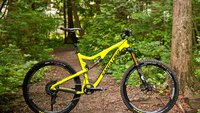










Comments
Vik Banerjee
2 years, 1 month ago
Min-Maxing my 2018 GG Smash would be easy. Take it off the wall hook and ride. Done. I'm pretty sure I could say that in 2-5 years. This is season #5 of its service life so perhaps that's too early for the intent of the article series. I have no plans to sell this frame so I can touch base in 2027 when it's 10 years old.
The only reasons I would upgrade to a new FS bike would be #1 it breaks and GG can't supply replacement frame parts [They are still making CS AFAIK, but not the rest of the frame] #2 I get bored riding the same rig for so long. I can't see a performance reason that would motivate a change. If #2 is realized I plan to keep the frame/shock in my crawl space so it can rise like a Phoenix in the future and ride the forest amongst its blender bike overlords as a time travelling commentary.
One interesting thing about riding a hardtail [especially SS] amongst a herd of mostly FS bikes [meat and blender] is it highlights that a lot of the energy we spend on breathlessly commenting on the latest tech is fun, but silly. I'm not denying there have not been some genuinely beneficial technical innovations in MTBs, but they are floating [drowning?] in a sea of marketing spew and hype.
Reply
Andrew Major
2 years, 1 month ago
Yes, a great mountain bike in 2018 is probably going to be a good mountain bike forever no matter how geo rolls. I wish they’d continued making aluminum frames and had made their aluminum frames modular like the carbon option. Love my brother’s aluminum GG Smash - how it rides and working on it - but I think being able to run the longer chainstay kit they have now would be a genuine upgrade.
Yes to single speed hardtails - even rigid single speed hardtails - opening one’s mind to how divorced fun and features can be when it comes to playing bikes in the woods.
Reply
Lu Kz
2 years, 1 month ago
> SRAM XX1 drivetrain, Shimano XT brakes, dropper post, RockShox Pike RC3, and custom wheels with Hope hubs for 6000 CAD | 5500 USD.
And now the (admittedly carbon framed and carbon wheeled) fuel EX 9.8 with a GRIP-1 damper 36 is pushing nine grand once you give the government their cut and walk out the bike shop door....
Nice to see another entry in the series, these and the "little service things to make your not that awesome bike substantially better" have been some of my favourites from you over the years.
Maybe things are different down in the land of mud and year-round riding, but I can't recall ever telling a customer their XX1 11 speed rear derailleur is punched from simply riding without gross impacts, SRAMs higher end stuff from that era usually has no issue coming back to life with some cleaning in the parts that come apart and some one step in the parts that don't, and when we're talking XX1 money, the labour might be worth it.
Likewise those XT's are probably fine with a full flush, fresh rotors of at least RT-76 quality or greater, and a high end pad like MTX to add some performance. This is a case-by-case basis, as you mention, they aren't rebuildable, but the hundred-series SLX/XT/XTR stuff is still solid if they haven't blown a piston or master cylinder over the years.
Other candidates for min-maxing old bikes might be anything from Rocky Mountain or Santa Cruz - often two of my go-to recommendations when someone is wondering which bike they should own if they want to have a bike for 10 years. The geometry won't be as cutting edge as others even from the era, but both brands are in my opinion industry leading for offering frame and small parts well past many others. Of course, you then have to deal with buying a Rocky or Santa Cruz used - which most owners consider to be made of solid gold, even with severely clapped out parts.
I might also be inclined to add the first gen Optic to the list. I think they're a year or two newer than the generation of process that's featured in this article, but they do overlap. Plus, they were pretty affordable when they came out and hopefully will be less desirable on the used marked than some aforementioned 'Cruz bikes or perhaps bikes that may be developing a cult following like the Process 111. Slap a 1.5-2 degree angleset in an optic, update what's clapped, and you're off to the races. Well, I'm not sure which races you'd be off to as its not an XC race bike or an enduro weapon, but you'd have a good ride.
Edit: If you want to be really crazy, (and I know you do love batshit theorycraft on this stuff), how about a 2014-16 Trek Slash that's actually been turned in to a trail bike? This probably is cost-prohibitive since you're replacing all the suspension on it, but consider this: Short shocked with a 210x55 to bring the rear travel in to the 140mm or so range, mulleted with a 140mm fork out front, angleset, and with the mino-link ran in the steep mode to keep the seat angle in check. I think the only way this works would be for someone slightly shorter than the original intended height per size, as we've shrunk an already short reach even more. You might get away with it as Trek ran slightly shorter seat tube lengths per size than was common at the time. It's probably a bad idea though.
Reply
Andrew Major
2 years, 1 month ago
I’ve seen a lot of leaky Shimano brake calipers from this generation (ceramic pistons) not to mention lever slop, but certainly there’s a possibility they’re not bad. At the very least they could be sold for parts. I’ll still vote for actually-serviceable brake spec and using whatever small amount of influence I may have to encourage companies like Shimano and Magura to consider rebuildability v. replaceability for future products. It wouldn’t be a big step for either brand to sell service kits and design their stuff to be worked on.
Interesting idea with the Slash. In the same vein as my SB104 Before Brunch Ride, sometimes you just have to do stuff to see how it goes. Nerds will nerd.
Reply
Luke Kozakiewicz
2 years, 1 month ago
This comment has been removed.
Lu Kz
2 years, 1 month ago
I agree with you about leaky pistons, they also occasionally had exploding master cylinders unfortunately. But if the setup on the used bike hasn't grenaded yet, why not save some cash until they do? It's a shame that the separation between shimano servicability and calipers in to the trash bin is an extra hole and some threads.
I can't handle not riding my Saints on my bigger bikes sadly. It's certainly a shame when a Saint or XTR part blows up at 2.2 years in. Big repair bills for such small parts.
Since you brought them up, I'm not thrilled with Magura's use of wood screws to attach their high end levers to bars. No threads, just carbon you thread in to. I don't know about you, but I've had two sets of Saints that have moved through several bikes in their life (and sadly a couple hoses as they just keep getting shorter) and I'm not sure if the Magura's would hold up after a couple dozen threads and unthreads. I think there's simple solutions to that but it seems a bit odd!
Reply
Andrew Major
2 years, 1 month ago
At the end of the day, even fresh, I don’t love Shimano ServoWave brakes - especially the two-piston ones, so if they were fresh-enough I’d flip them and put the money towards something else. I’d still like to try Saint Callipers with T-8000 levers at some point.
Four-piston Shimano, sure I’d hang on to it. Code R, definitely - just rebuild.
———
Magura uses T-25 coarse-threaded hardware. Honestly, calling them wood screws makes you sound a bit silly (sorry). They’re used because moulding fine threads into the carbon fibre or glass fibre (model specific) master cylinder bodies would be a recipe for disaster. I’ve installed and worked on enough Magura MT brakes at this point that I’ve lost count. No issues with the coarse screws even from hacks working on their own stuff*. They feel awesome, which anyone who has a set will tell you.
I’m inclined towards the Cura4 not because it’s a better riding brake than the Magura (if anything I give that battle to the 4-Piston Magura units) but because they combine good power and feel, mineral oil, and maximum serviceability.
Hayes Dominions are also so good. So, so good. And rebuildable. The power, the feel! Cura4 I like the simplicity and the mineral oil but it’s a harder competition to calm since the Dominion is supported with rebuild parts.
———
*I’ve seen ham-fists strip out the bleed plug on Maguras, which always blows my mind.
But the number one Joey move by a mile with brakes is people who destroy their non-serviceable Shimano master-cylinders by pushing the pistons back without the system open. So. Many. Times. So I generally don’t judge something based on the worst wrench I’ve seen service it.
Reply
Lu Kz
2 years, 1 month ago
Good insight regarding the exploding master-cylinders. We only ever see the result, not the cause - pretty much all we can do is put something like "customer states...." in the work order.
Fair enough about the silliness of my wood-screw comment. It was tongue in cheek (and I was considering putting a note when I wrote it saying I know they aren't *actually* wood screws). The store owner loves high end magura stuff, and because store owner, never swaps them on to his new bikes - just new sets show up. Good to know there's no concern with material failure over time with the use of course hardware.
Reply
Alex Hoinville
2 years, 1 month ago
Maybe I shouldn't be too surprised because I've been following your writing for a while and agreeing with a lot of it, but the bike you end up describing is pretty dang close to my 2016 process 134. I demo-ed one my first year as a shop rat, fell in love and bought the base spec (the one with the John Deere color scheme, which looks fantastic with my bright red mattoc) as it was what I could afford and as things broke or I had the money to upgrade I gradually replaced everything on it.
Current spec is: 150mm Manitou mattoc pro, cane creek dbair il, xt 4-piston brakes, Stan's flow mk3 front wheel, random giant wheel with a dt 350 hub that was in one of my friend's parts bins when the Stan's rear hub seized, wtb vigilante 2.6 front and trail boss 2.4 rear, xt 11 speed shifter and slx derailleur, SRAM GX 11 cassette and cranks, 1170 chain and 30t cog, crank bros hiline 160 dropper, wtb coda saddle, and renthal fatbar lite at 760mm.
The next upgrade is a -2° angleset, and at that point I think I'll be pretty much done apart from replacing wear parts and bearings as needed.
I really enjoy your writing and it has definitely informed my bike build preferences over the years. I hope you achilles heals quickly.
Cheers!
Reply
Andrew Major
2 years, 1 month ago
Thanks Alex!
Is your DT 350 hub straight pull or j-bend? I have a friend who was in a similar situation with an OE wheel that was straight pull and when the rim crapped out he found a j-bend hub shell for a bargain and moved the guts over for his new wheel. Shop just charged him for a hub rebuild since the drivering needs to come out anyways.
Another aside about CaneCreek IL-Air and DB-Air shocks, for folks that get way behind on their routine maintenance, is that if you cook your air spring assembly (body + can) it’s not a ton more money to convert them to coil (body, spring collar, spring) v. replacing those parts.
———
Your 134 sounds sweet! Post up when you do the headset and let me know what differences in riding you notice. A lot of folks seem to notice the extra stability climbing more keenly than descending (in a good way).
Reply
Alex Hoinville
2 years, 1 month ago
It's a great little wheel, the hub is j-bend and the giant rim (P-AM2, I think, not that that means all that much) Is plenty strong for now, and I'll probably be replacing it with a velocity rim once I do cook it, especially since Grand Rapids is pretty close to where I grew up, home state pride and all that.
So far I'm really happy with the dbair il, but I have thought about having it rebuilt as a coil. I've been pretty good about keeping up with service intervals, and even with the air spring stuffed with spacers I'm finding the (nice and soft) bottom out bumper pretty regularly so I'm a little hesitant about coil from a bottom out resistance on this frame.
Reply
Andrew Major
2 years, 1 month ago
Velocity makes great stuff! I think it’s cool when folks buck the trends.
They’re great air shocks if, like every other air shock, folks stay on top of service. I prefer to run less sag so I think I’d be okay with a standard spring, but CaneCreek does also make progressive options.
Reply
Alex Hoinville
2 years, 1 month ago
You know, now that I think about it a bit, I wonder if I'm running a more sag to compensate a little for the currently steep head tube angle. I run about 20% sag on my other full sus bike, but about 30% on the process at the moment. It'll take some experimenting once the angleset is in to see if I can comfortably run less sag. The increased simplicity and lower friction of coil shocks is very appealing to me. The adult Lego aspect of this hobby truly is really fun.
-------------
I'll definitely be replying back to this chain with my experience once I have to angleset in.
Reply
Andrew Major
2 years, 1 month ago
Cheers! Will be interested in reading your angleset experience!
The Adult-LEGO experience v. The relatively stable progression of bikes the last five years is what makes me think nerdier, more adjustable/adaptable bikes are coming.
ElBrendo
2 years, 1 month ago
*Standing ovation* Andrew, your Min-Max articles are the best. I must've read your "Buy the bike you already own" 5x already in the past two years. Always appreciate your advice, especially for my grom's bikes!
Reply
Andrew Major
2 years, 1 month ago
Cheers! Excited to have some more grom-content coming up soon.
Reply
Bikeryder85
2 years, 1 month ago
This is such a fantastic idea... always loved this bike too. Still a slackset away from being ideal (for me).
Reply
Andrew Major
2 years, 1 month ago
Absolutely, it’s buried in there under the suspension heading, in the second part. -2* headset is a must for my refresh.
Cheers!
Reply
Bikeryder85
2 years, 1 month ago
I've been thinking about a custom single speed, but I may start digging through the classifieds for one of these instead. Thanks for the reminder that these existed!
Reply
Andrew Major
2 years, 1 month ago
The battle on N+1 and MB1 continues!
Reply
mikeynets
2 years, 1 month ago
I've been wrestling with the N+1 vs MB1 logic for a while. My soon to be MX Spitfire could probably be my MB1, but I'm drawn to the idea of having a hardtail as well, even if I always struggle with how it should be built up. I've tried to make it a complimentary bike to the full suss, filling a very different role, but it never seems to satisfy in that guise. I almost always come back to making it basically "just a mountain bike" that I will ride on all the same trails I ride the FS, albeit differently and with different expectations. Not vastly different, but enough so that I have a strong preference to grab the full suss first, but don't think twice about any ride or route if I need to take the hardtail for whatever reason.
I think it comes down to this: with the hardtail I'm after a qualitative difference, not quantitative N+1. And if I'm really honest with myself, for me, that's really not enough reason to have a second bike. Because most times the experience I'm after on my preferred trails is best served aboard a FS. Yet I really do enjoy the process of fiddling with the hardtail and different setups. So maybe the building/faffing + "the different enough" ride experience together justify an MB1 + 0.5? Hard to say.
If I had to only keep one bike, it would easily be my Spitfire.
Reply
Velocipedestrian
2 years, 1 month ago
I have a spitfire and a hardtail. They're very similar, but as you say the quality of ride is different.
Plus if one's in the stand for work, the other won't let me down on the same ride.
I actually find myself grabbing the FS for flow tracks, and the HT for steep tech - the speed rattling through my body is tiring without rear suspension, and cleaning slow jank is very satisfying when riding with buddies with it.
Metacomet
2 years, 1 month ago
On a fairly related note to this article, something I began thinking about more and more in the last 2-4 years, is if we are going to start seeing people seeking out bikes from a specific model year of their production. Mostly as bikes have Really began to mature in terms of things like geometry, suspension kinematics and pedaling performance, internal dropper routing, boost front and rear becoming the more/most prevalent standard, etc., and as the newest generations of some bikes have just gone too far in one direction or another for your given taste and requirements.
Aside from the obvious value of going with an older but still supported bike, you may find better fit and function and performance by going with a model from a specific ¨vintage¨ for a specific use case. Kind of like how skiers/boarders may have really loved the shape and flex/layup of a specific model that was only made for a year or so before the manufacturer changed it, and people go out of their way to find NOS, or even just used and abused with hopes of keeping that perfect ski in their quiver a bit longer.
When a bike just works, it just works, and pretty soon (or maybe its already happened) it wont really matter what year its from as long as the bike is sporting features and standards that are still supported and the frame was built to last.
Think this is possible? Is this already happening? Obviously the shiny and new will always carry the most broad appeal, but for the right and knowledgeable person, their perfect bike may not be the newest one.
Reply
Andrew Major
2 years, 1 month ago
I don’t know about vs. new bikes but there are certainly some sought after used bikes that I know folks target.
Banshee Phantom V1, ‘12/‘13 Enduro 26”, ‘14-‘17 Kona Process 111.
As chainstays grow to better balance rider weight I can envision riders who love super-short rear-centers chasing used bikes that fit the bill.
Reply
Lynx .
2 years, 1 month ago
Count me as one looking to get my V1 Phantom back up in good working order and seemingly, maybe have the solution ;-) Also the Process 111s were nice bikes' almost a carbon copy or vice versa of the Phantom, just with a bit more travel.
Reply
Mark
2 years, 1 month ago
Personally I think the biggest factor in the min-max experience is patience, with a close second being knowledge. On the knowledge part, Andrew, I think your articles do probably the best job anywhere of distributing useful knowledge to riders of all levels (except for the budget has no ceiling people), especially beginners, for putting together a good bike that will serve them well. The patience/time thing is something that's up to the individual.
I've gone the routes of buying budget, buying high'ish-end and min-maxing to a point of almost obsession and can honestly say that as long as the bikes have been in good working order I've found the difference in fun factor on the trail to be negligible. The added benefit to min-maxing though is that there is definitely a certain sense of pride to be had knowing you built up a well performing bike on a budget that is a fraction of the cost of a comparable new bike.
Lastly, I think one of the best experiences an accomplished/experienced rider can give themselves is to somewhat regularly (5% of the time?) take a dated geo/tech bike out for a ride in order to reset your skills that can get a bit dulled from having floated on the best tech of the day for too long.
Reply
cheapondirt
2 years, 1 month ago
Bolting a bike together and improving it over time has to be one of the most underratedly satisfying processes. The reward of making a small change that makes a big difference. The slightly smug feeling of having a really unique ride. And doing it on the cheap, even better!
Reply
Morgan Heater
2 years, 1 month ago
I loved my 134dl, it was my first fully squishy bike and I bought the used frame and built it up pretty much exactly like you've spec'd it out here without the angle set. Still mad at whoever broke into my shed and stole it.
One problem with those bikes was the rear brake hose routing at the chainstay. A lot of used ones will have worn through chain-stays.
Reply
Andrew Major
2 years, 1 month ago
Yeah, that’s a bizarre one to me like some of the fork crowns I’ve seen sawed through but brake hoses. I mean, notice it and do something about it some point between when the paints gone and the structural materials gone? Easy enough to use protective tape strategically or reroute with zip ties.
Reply
Morgan Heater
2 years, 1 month ago
It's a bit sneaky, I caught it on mine, but the hose is on the inside of the seat stay and in our wet climate grit on the hose starts to wear. I've seen a couple where the seatstay is totally worn through and the owner didn't even know it.
Reply
@canopyclosure
2 years, 1 month ago
I had a 2015 Process 111. Definitely maxed it with Works Angleset headset and 140mm Pike. Also, of very important note, I had successfully epoxied a water bottle cage into a size Large 111. I used clear helicopter tape as my first layer, then epoxied onto that. It held for years and I sold it that way. From 2016 to about 2020, this was my N+1. Several fancy carbon bikes came and went, but I kept the 111 until the bitter end. I was actually afraid the heel rub on seatstays would eventually wear thin, ha!
https://m.pinkbike.com/buysell/2883555/
Reply
Mark
2 years, 1 month ago
Expansion well nuts work great for new water bottle mounts if people are willing to drill a hole in their frame. A lot of places sell singles for around $3 each.
https://www.canadiantire.ca/en/pdp/hillman-expansion-well-nuts-1619478p.html
Reply
Vik Banerjee
2 years, 1 month ago
You can tape a bottle cage onto any frame for the price of some tape. It will hold securely, is easily removed and can even be somewhat colour matched for aesthetics.
Reply
Andrew Major
2 years, 1 month ago
I know this sounds shallow, but I could never love a bike that had its bottle cage taped on.
Reply
Vik Banerjee
2 years, 1 month ago
Fair enough. Of the non-bolt on options tape is my preferred option. On a colour matched frame it's a clean setup and I like the fact it can be removed/repositioned as needed/desired. That's especially nice for something like an extra bottle for summer riding.
Reply
T0m
2 years, 1 month ago
I’m a “seasoned” chronic tinkerer who keeps a good bike for years and never realized it was min-maxing until Andrew framed it up in words. I had a med 2014 Process 111 and loved it but it wasn’t quite right for my needs. A large 2017 Evil Following is my current ride and a good P111 cousin IMO. I upsized for more reach.
I’ve swapped to a -2 Works headset, 140mm Fox 34 fork, and a 90x184 single can McLeod shock with 4mm of air can shims to limit stroke to 86mm. This increases the rear wheel travel slightly to roughly 130mm, while the longer i2i increases static seat angle (roughly 75 deg) and the angleset still slightly decreases the static head angle (66.5 ish.) BB height is very close to same as stock. Evil has two-setting shock links that change geo a fair bit remember- this is with the higher link setting for better seat angle.
It climbs staying much higher in the travel than the Process could manage even with a DB Inline Air (with the 2nd gen fixes that shock was reliable at least for me.) I know Evil has some prominent detractors but the Following is a legit bike for Colorado. YMMV of course. Keep those recent bikes going, they’re not that far off the brand-new stuff with some thoughtful upgrades and good maintenance.
Reply
Lynx .
2 years, 1 month ago
Hahaha. Yeah, Evil makes some good bikes, I moved a friend from a SpecialED Stumpy to the first Following and it changed his riding. Saying that, it's good once you only ride in dry conditions, if you live and ride anywhere when there's rain, mud, muck and you ride, you're SOL, clearance in the rear is crap, even with a 2.3" tyre.
While they make decent bikes, not too impressed with their CS - put another friend on a Following, orange, but they Fvcked up the paint, didn't do proper prep either at the factory or they repainted it to fill the order, not sure, but his frame protection didn't get here in time, so just put some packing tape on the stays so he could do a little test ride and then when I went to remove it it pulled the paint right off and they basically refused to take it back/warranty it
Reply
cheapondirt
2 years, 1 month ago
Can't wait for more of this!
At what head angle do you find a bike slack enough that it makes more min-max sense to skip the Angleset?
Reply
Andrew Major
2 years, 1 month ago
Am I allowed to yell “it depends” as I run away?! Hahaha
If I’m over forking a bike I’ve generally preferred the handling when that’s combined with an angle set. But if I already have a perfectly good headset I’m not spending the money over +/- one degree.
I don’t have any hard rules. I’d absolutely go -2* in any of the ‘14-‘17 Process bikes. Would I put one in a new Process X or Honzo ESD? I mean, I’d try it if the one I have for because why not - in the name of experiences - but I wouldn’t think it necessary as with these bikes.
Over-forked with a -2 my ‘15/16 134 would still only be sitting ~ 65*.
Reply
Nologo
2 years, 1 month ago
My overforked 167 sits at 63.8° and feels fantastic. Been using anglesets elsewhere but don't feel the need here.
To keep reach around original 450mm (medium) I use no spacers, 50mm stem and 50mm riser bar.
Sweet bike, easy to service, Kona N Van still stocks all the parts I've ever needed. It serves as my fun and park bike but it doesn't feel out of place on Hyannis-Corkscrew or No Quarter climbs.
Reply
Andrew Major
2 years, 1 month ago
167 was such a sweet bike. I don’t think many brands thought DH/Fr rigs would go from 26” to 650b, or at least not as fast as they did. One more reason I wish Kona used they sliding dropout system on every bike.
I’ve seen at least two different 167s built as 26/27 mullets with 180mm dual crown forks and they certainly look the mini-DH part.
What shock are you running? Have you tried a coil?
Reply
Nologo
2 years, 1 month ago
Running Monarch plus Tractive tuned for this frame at the moment and it's been stellar.
Front is Metric HLR 180mm.
In the past there were Vector HLR and TTX22m Also Vengeance coil with Roughcut upgrade front. Less pop and more pedal strikes made me settle with air instead (for now). Air in this case makes it feel livelier and "more precise", but I have to say coil feels absolutely amazing in WBP
Reply
cheapondirt
2 years, 1 month ago
Yes, absolutely. I realized as I posted that the "slacker=better" mindset is too simplistic and there needs to be room for preference.
My mini-mullet sits around 64°, happens to be the slackest trail bike I've ridden, and I'm very happy with it. So I don't know if that's what I like, or if even slacker could be more better.
Reply
Andrew Major
2 years, 1 month ago
How slack is too slack?
“I’ll let you know when I find it.”
Everything is a trade off of course, and I’m used to the static 64* on my Walt, but I do a fair amount of technical climbing and I’d rather have something stable than something whippy. It seems maybe XC race bikes are working towards the same conclusion?
Reply
Tehllama42
2 years, 1 month ago
Andrew - I'm sorry in advance, because there are things I should be writing instead... but here we go.
This is great stuff, I can only hope to add to that conversation.
Reply
Lynx .
2 years, 1 month ago
Said in utter jest, hoping you heal up and are back on the bike as soon as possible, but I think your current situation is lending itself to you having some very cool ideas for pieces Andrew, definitely a "silver lining" to the sidelining. :-)
As I said, cool idea, but I'm not an upgradsitis type person, I'm still quite happy riding 10spd with an extender cog to give me 13-42 and 67.5HTA is plenty slack for me. The only real thing I think would "need" upgrading to bring a bike like that more inline with today is wider rims _(for a trail bike, I think
Reply
Andrew Major
2 years, 1 month ago
It’s going to be very geography and trail-preference specific. You can get killer grip with ancient rubber and cantilever brakes on the smoothest volcanic rock trails in Moab. Crazy some of the old mountain bikes in use there that would be commuters here in North Vancouver.
Thanks! Long ways to go yet.
Reply
JT
2 years, 1 month ago
Angle adjust headsets and over forking a bike at the same time is probably the best way to min-max the value of a bike regardless of wheelsize.
Reply
Andrew Major
2 years, 1 month ago
100%. It's actually a concern of mine that there's a risk of redundancy in doing a series of these pieces - so I'm hoping for a wide range of bikes and applications.
Reply
ElBrendo
2 years, 1 month ago
Andrew, what's your thought on someone buying a 29" fork for a 650b wheel? My last used bike came with a setup like that and my thought afterwards is that it gives the ability to mullet it if they choose down the road. Any disadvantages?
Reply
Andrew Major
2 years, 1 month ago
You may end up running the fork 1cm shorter for a certain handling characteristic related to axle-to-crown height, or maybe not.
I’m all for it, especially once we’re swapping parts around like Lego sets. A 29’er fork that’s quick and easy to travel adjust - like a Helm or Mezzer that uses clips instead of swapping air shafts - gives you a huge degree of adaptability. Just leave the steerer long enough to fit frames with tall head tubes!
As an added bonus 27+ fits nicely in 29’er forks if you want to try but tires.
Reply
mtbman99
2 years, 1 month ago
I did this with a 38 on my current bike 27.5 fork set at 170. I had to drop the travel to 160 once I put the 29r wheel as it put my weight a bit to far off the back of the bike for climbing.
I did not feel like there were any issues with the fork/wheel combo
Reply
mtbman99
2 years, 1 month ago
This comment has been removed.
Ripbro
2 years, 1 month ago
Is the CC inline coil reliable? I’m looking into getting a coil shock for my aluminium Ripmo, but read some reports that they develop a knocking at the sag point due to the climb switch. Gas this been fixed? It’s seems like a good coil shock for the price:)
https://www.perpetualdisappointment.co.uk/cane-creek-dbcoil-il-long-term-review/amp/
Reply
Andrew Major
2 years, 1 month ago
In my experiences it’s a great shock. I recommend them regularly.
I don’t know about knocking from the climb switch. I’ve absolutely felt ones that knocked but they were well overdue for a rebuild. It’s a bladder shock, which helps make it very smooth but you can’t run them into the ground like the CCDB coil shocks.
Reply
Andrew Major
2 years, 1 month ago
I’m 50/50 on name dropping but browsing your ‘perpetual disappointment’ link I wanted to add a little story.
I’ve been riding the CCDB twin-tube coil shocks for many years (pre-climbswitch, old aluminum adjusters, etc) and have been a big fan but I was very cold on the (IL) air and coil shocks initially as the original DB Inline was released as a premature product and had many issues. It’s the reason CaneCreek has a very robust QC/QA process.
Now, I’m an average, regular, rider and it was Nigel Reeve being hot on the (IL) Coil for folks like me that gave me pause to give it a second look. Because I’m influenced by folks experiences too.
I think it’s a great shock. I love that all the adjustments are external so the shocks are easily transferred bike to bike. I think performance is fantastic. And it’s a win in my book that it fits a bunch of bikes where normally a coil shock with a reservoir could limit water bottle options (which is a reason I’d choose it over a rebuilt CCDB on my 134 build).
Anyway, hope that makes sense. Not trying to take away from anyones negative experience with any product, or declare myself some all discerning suspension guru / pro tuner / pro rider. But I’m very positive on the (IL) coil for many reasons.
Reply
Ripbro
2 years, 1 month ago
I really appreciate your response and love your mini max articles, I’m always looking for great performance at a good price. I’m also an average rider, and this shock looks like a good way to try a coil out back. I’ll have to look and see if it clevis link compatible. I looked at a bomber CR and it won’t work. I always wish I could throw down for a storia, but it’s hard to justify the cost. It would be fun to try them fully setup back to back.
Reply
Lynx .
2 years, 1 month ago
Hearing you recommend this shock, over and over, all I kept thinking is about those early years and the amount of failures, the inability to service yourself, but you seem to be saying that that's not a thing now. The only problem now is, I think that there are still quite a few of those duds still sitting as new/old stock and being sold, so hard to take the gamble, especially when you don't have the luxuury of living in N. America or continental Europe where it's easy and cheap to send it in for warranty.
Reply
Andrew Major
2 years, 1 month ago
Just to clarify, it’s the reservoir CCDB coil (CS or stainless adjusters) that I’m generally recommending all the time and that’s based on service being available - even though they are bombproof they will need service.
The Inline coil is, in my view, a great little shock and I’d choose it here for bottle clearance. But it will need routine service like most other shocks, every ~100hrs of riding.
Reply
Justin White
2 years, 1 month ago
I don't recall the exact physical differences, but it's actually easy to tell the difference between the old Inline models (problem prone) and the new IL models (seemingly more durable). If someone sells you an old one using a picture of the new one, well that's a different problem.
Reply
Andrew Major
2 years, 1 month ago
The old head unit is notably smaller, for one.
Reply
olaa
2 years, 1 month ago
The SC 5010 (first or second gen) would be a great min max platform. Bomber quality and ride, and easy to build for any type of terrain. Back then i had one set up with coil shock (old recycled RC4) and 160 mm Mattoc. Heavy but fun build. The subsequent 5010 was set up xc style, light and nimble.
Could well see myself riding one of those again.
Reply
FAIRbicycle
2 years, 1 month ago
So good to see that bike. Really, except for the bottle cage (your article gave me a push to work out something for that too) that process 134 is perfect. For the not-high-speed but super playful riding here it is just the right thing. I traced down that frame a couple years ago new from Kona, cost me way more than 1000.- bucks, but it was worth it. Been fine-tuning it since. Even kind of led me to design the FAIR bicycle DROP BEST, at least gave me the idea.
The min-max concept is spot on, it is always the best when the guy with jeans and the *old* bike shows up and schools everyone :)
Not that I am that guy, but the min-max thing goes that direction. Everytime I think I need a new ride, I try to force myself to think about what a pro rider could do on my Kona... and away goes my need, my hope to be better through a new bike. I just enjoy that bike and it is waaay good enough for me to have all the fun that can be had through mountainbiking.
Also, my bike is down to about 13.5 kg complete, so not even the weight speaks for something new.
Reply
Andrew Major
2 years, 1 month ago
If I went Fidlock I’d glue (JBWeld) the Fidlock mount to the frame. A regular cage I’d glue a Wolf Tooth B-Rad mount to the frame and bolt the cage to that.
I don’t find drilling holes for new bosses but I think gluing on a mount makes the bike more re-sell friendly in the future.
Reply
Lynx .
2 years, 1 month ago
Andrew, was thinking on this a bit more and know you said this one was not totally best value for $$, but ride experience compared to a new bike. So curious how about a Replace because it's needed vs because I want better? i.e. only replace that which absolutely needs replacing/upgrading because it's absolutely toast or completely broken.
Reply
Andrew Major
2 years, 1 month ago
I too live with a lust for luxury, so I totally can appreciate, as any rider’s budget allows, upgrades that are wants, or will improve performance, over needs.
In the case of this series, I can justify quite a bit based on keeping my rig - including suspension that’s nicer than any stock bike in my price range.
Reply
John Hinton
2 years, 1 month ago
I think my Thunderbolt qualifies as min-maxed. Deore 4 piston brakes, XT 11 sp shifting w/ SLX cassette, Marzocchi Z1 fork, Oneup dropper. The problem is that the urge to 'upgrade' doesn't go away even when your stuff is objectively good enough for whatever riding you can do...
Reply
Reed Holden
2 years, 1 month ago
I don't think any of my bikes would qualify for min max, but they are 4-5 years old now and considered "out of date." Instead of looking at new bikes I have taken to swapping parts around to create new "riding experiences." Mulleting one. Over forking another. Trying out different stem lengths. Trying different tires.
At this point I'm happy to ride them all until they break. I never liked the idea of leasing a car and I feel like a lot of people consider the bicycle purchases to be like a lease - they expect to turn it over before it loses it's perceived value or needs any significant labour. This is a philosophy I cannot get behind but many find it makes sense for them. I much prefer the thought you've put into bringing back a riding experience you liked so much and with a bike you have formed a real fondness.
Reply
Joel_P
2 years, 1 month ago
Great article, thanks Andrew. I wish the internet had more of this!
I have a 2015 Process 153 (https://2015.konaworld.com/process_153.cfm) that I ride on the Shore regularly, with a bunch of upgrades: 1x drivetrain with RF Turbine cranks, XT shifter and der, XT brakes, Renthal bar, Chromag seat, Fox Float DPS rear shock. I've done regular suspension service, replaced bearings etc, and it's running well. Reading the comments, it sounds like the -2deg angleset is probably upgrade that going provide the best performance/value increase? Would you agree for the 153?
Reply
Vincent Edwards
2 years, 1 month ago
Quite and interesting project. In found one on PB here: https://www.pinkbike.com/buysell/list/?region=3&q=Process%20134&page=2
Although going through your list of changes, you’re not far from buying enough new parts to build up a frame from scratch.
So then the question becomes- are you better off spending $500-1k more to get a brand new (w/ warranty) aluminum frame like a Stumpy Evo ($2k)… ?
Keeping some of the key components of an older bike runnng- such as suspension, hubs, cranks, brakes- make the min-maxing proposition a lot more convincing. I’m all for keeping quality older bikes going… just wondering where the smart consumer should draw the line?
I hope you get some bites on your offer to help a reader with this ‘process’ … it would be really interesting do some back to back rides between the min-maxed older bike, and a new bike that hits a similar price point.
Reply
Andrew Major
2 years, 1 month ago
Certainly the value of any used bike depends on how many parts you’re replacing or servicing.
Transition Sentinel aluminum is 2900 CAD. A Stumpy EVO aluminum frame is similar. My friend bought his used 2014 111 frame for $500. So there’s an opportunity to win the price game with used even from a frame up with all new parts.
Reply
Agleck7
2 years, 1 month ago
I sold my '16 134 frame last spring that was in excellent condition for $600 USD. Just another data point
Reply
Andrew Major
2 years, 1 month ago
With a shock in good working order or frame only?
Reply
Agleck7
2 years, 1 month ago
With the stock monarch in good working order
Reply
Andrew Major
2 years, 1 month ago
That sounds both fair and like a good value to me.
Andrew Major
2 years, 1 month ago
Another advantage of this process is I wouldn’t need to do everything at once. For folks on a tighter budget, with a bike that rolls now, that could hopefully mean paying for upgrades over time. I can never recommend taking on debt to buy toys.
Reply
Lu Kz
2 years, 1 month ago
> Another advantage of this process
Good one, Andrew. Good one.
Reply
Velocipedestrian
2 years, 1 month ago
There's a NOS XL frame on that page - how keen are you (Andrew) on shortening that mighty mast?
Reply
Andrew Major
2 years, 1 month ago
It’s not the cutting of the mast as much as making a seat for the post clamp that makes me go ugh.
Reply
Velocipedestrian
2 years, 1 month ago
You have a file, patience and time.
A drill and a dremel, a beverage and luck!
My countryfellow AgrAde did it to a Mega.
Reply
Andrew Major
2 years, 1 month ago
Beauty job he did too! I was thinking about doing this to my daughters SQ24” frame to get rid of the mast and run a longer dropper. It’s easy enough though with the round seat tube like that Nuke Proof.
The gusset on the front of the mast on a ‘14-‘17 Process is going to be much more of a challenge.
Reply
Vik Banerjee
2 years, 1 month ago
This comment has been removed.
Justin White
2 years, 1 month ago
Could you elaborate on why you don't like the "labyrinth seal"? And why you'd prefer GXP cranks on a PressFit BB?
Reply
Andrew Major
2 years, 1 month ago
It's not in a PressFit BB shell in general, but specifically in the PF92 shells. If you have a PF30 shell then a DUB or 30mm spindle is great. For the PF92 shells, I prefer a 24mm or GXP spindle for the significantly larger bearings and for the potential for much longer BB life and, therefore, fewer BB re-pressings over the life of my frame.
If I had a bike with a PF92 shell I'd put effort into trying to track down a Chris King PF92 BB for this reason.
-------
[My Opinion] The 'labyrinth seal' is a big hunk of shitty plastic that doesn't do a good job of sealing the hub, can pop out by accident with the freehub body when folks have their wheels out of their bike, and which is easily damaged when they try to re-install it which, at best, creates a bunch of drag. Every other 'boutique' pawl-driven hub does a better job of sealing its drive system and being more user-friendly without easily damaged proprietary plastic parts.[/My Opinion]
As noted, I'd still be stoked to see Hope hubs OE on any bike. Just not nearly as stoked as say an I9 1/1 or the new Stan's-P321 collab.
Reply
Justin White
2 years, 1 month ago
Fast and detailed! Alright, pretty much exactly what I though you were gonna say.
I personally have never seen a Hope freehub just fall out, the seals on my hubs were pretty deep and needed a real good pull to remove, but I can definitely see someone mangling it trying to get it back in trailside (I usually removed the cassette first, or used a pick or long hex key to poke through the cassette and gently set the seal back in, but that might be tough outside of a [home] shop).
Figured bearing size was the thing, but didn't register the idea of less R&R helping it stay snug. Though I think I'd go with only 24mm Shimano/RaceFace style cranks, because most of the PFxx issues I've ever seen were on GXP-style one-bearing-does-all-the-lateral-locating setups and the clamped bearing walking a bit and creating or exacerbating misalignment.
I also liked my Hopes and would not kick them off any bike, but a P321 is on top of the list for my next wheel build, and 1/1 is 2nd.
Reply
Andrew Major
2 years, 1 month ago
I don’t know the exact circumstances that have freehubs coming out (and bringing the ‘seal’ with them) I’ve just put enough back in for folks and seen enough mangled ones to know it’s a thing.
GXP wouldn’t be my first choice if buying cranks for the Process, I’d grab some 24mm Aeffect R arms. But, if I had a pair I wouldn’t toss them. There’s always the option to replace just the bearings too when one side is wearing prematurely.
I do wonder if it’s how the cranks load the the bearings with GXP or a combo of that and shitty BB bearings though? My friends with King BSA BBs with GXP never had issues.
Reply
Justin White
2 years, 1 month ago
Aeffect R cranks are the jam, been running them (2 different pairs, one was stolen) for a while with the 2x 104BD spider to add a bash-ring.
I originally got them because the 170s (and 165s I have been told) are now actually shorter than the 175s (different forgings instead of just different drillings), which was/is not always the case on RaceFace or SRAM cranks. Sure, just moving the pedals up 5mm is great, but I hit the cranks themselves easily just as often as the pedals, or at least I hit them harder, because my crank ends are frickin' hammered while my pedals are merely beat to hell, and that would be even worse with 5mm longer crank ends.
The King BSAs likely don't have problems because they are better bearings to begin with, and BSA means the threads can handle those lateral loads. I'm not against GXP, the idea of the drive side handling only the massive drivetain-induced radial loads while the NDS handles all the lateral loads and lesser radial loads seems technically sound. Just aginst GXP in a PressFit, since that press fit is now being asked to handle lateral loads that are literally the same as those used to remove it, so it's way more likely to misalign no matter how good the bearings are, but yeah crap bearings would definitely exacerbate that by adding friction and providing more precession forces to help the cup walk out a bit.
Reply
Andrew Major
2 years, 1 month ago
It’s quite a smart example of cutting costs but also not cutting corners. They’re the same forging for each length but it is cut and drilled specifically for the desired length. So no extra chunk of aluminum sticking out the bottom on the shorter sizes.
Justin White
2 years, 1 month ago
This comment has been removed.
mtbman99
2 years, 1 month ago
I treat each and everyone of my bikes as a constant form of min/maxing. I usually build from the frame up only replacing parts as they need to for the most part and swapping over as many parts from my previous build that is possible.
My most recent conundrum has me looking to replace my current slx shifter since it has been acting up and not shifting as nicely and has a fair amount of slop. Considering moving to a XT shifter even though it is twice the price or go with the same SLX . Do I spend extra on an 11speed part knowing that 12speed is an option in the future with a new freehub when my current drivetrain life has been used up.
Reply
Lynx .
2 years, 1 month ago
As someone who's had experience with Shimano from good 8spd all the way to 12, I'd say stick to the SLX 11spd shifter from them, the XT is VERY hard to push, somehow they managed to fvck it up. I say that as that's exactly what I did when I had enough parts minus a shifter and chain to try 11spd, went SLX and the only thing I miss is the double click on the trigger that XT has.
As to the whole, "need a new freehub" thing for Shimano 12spd, not quite sure that'll stay a thing, as saw that they're doing 12spd for road and it uses the HG driver body/design, so expect that it will make it to MTBs in the not too distant future for maybe the lower end.
Reply
cheapondirt
2 years, 1 month ago
The shift action is definitely stiffer on XT but it doesn't bother me personally. I would make the decision based on how badly you want the multi-upshift feature.
Reply
mtbman99
2 years, 1 month ago
I have never had the dual upshift so I don't know if it is worth it or not. I know with XT they tend to be built slightly sturdier than SLX with better materials and longevity. Not the same level of difference between nx and gx but it is there.
Reply
Dave Tolnai
2 years, 1 month ago
My take on the 11 speed XT isn't that it's "stiffer", it's that the feel of the lever throw is all over the place. There's a good cm or so of free stroke, then you hit a point where the lever just stops moving, so you squeeze it with a bunch more force and then it finally throws this notchy sort of shift where it feels like you broke something. Stiff is fine, but the version of the shifter that I had felt like garbage. SLX feels a bit more plasticky, but there's much less of that inconsistent notchiness.
Reply
Lynx .
2 years, 1 month ago
Next time I have my friends bike here to service, I'll pay closer attention to the feel and see if what you describe Dave is in fact the feeling I feel, but I do think it is, it's truly horrible IMHO. Love the double tap shift, but I've damaged my thumbs in the past and I'm not about to aggravate them with that horrible shifter.
Reply
Justin White
2 years, 1 month ago
I have to agree that it's just plain stiff, but not sure if it's the shifter or the mech. All I know is, even with fresh cable and housing, my friend's full XT 11sp setup is way stiffer than my recent SRAM 11sp or Eagle, or my current SLX/Deore 12sp.
Reply
eriksg
2 years, 1 month ago
My experience with 11 speed XT is the downshift lever feels normal, very soft continuous feel with a couple slight detents for the multi shift. Maybe it's stiffer than others but I don't notice. It's the upshift lever that's stiff and feels like you're breaking something when you pop through the first click. The second click is less jarring.
Lynx .
2 years, 1 month ago
It's the shifter Justin, because I'm running the XT RD with no issues, both on the full 11spd setup with SLX shifter and also on a 10spd setup with XT shifter and both of those feel fine. They spec'd a too stiff spring I think in them and/or wrong cam, but too me it's just so horrible I'm willing to give up the double click because of it.
DMVancouver
2 years, 1 month ago
The leverage ratio on the old 134 was pretty flat (about 9% progression). At least on paper, it looks like it's better suited to an air shock. https://linkagedesign.blogspot.com/2015/05/kona-process-134-2015.html
Reply
Andrew Major
2 years, 1 month ago
To some extent, it depends on how you like your rear suspension to work and damper settings - I know more than a couple riders who don’t go big but ride fast who prefer to run less sag and more linear bikes.
On the 134 it’s quite likely I’d end up on a progressively wound spring, but I’d still be choosing coil over air.
Reply
oudiaou
2 years, 1 month ago
The progressive springs available on the market do not fit 190x51mm coil shocks, they're simply too long. I tried running a CC DB Coil IL on a 2014 Kona Process but ended up going back to air. Tracking performance with small to medium size obstacles was sublime and the coil shock works better on the linear process most of the time, but I bottomed too often despite running a very stiff spring and less sag than ideal.
Reply
Andrew Major
2 years, 1 month ago
The Cane Creek Valt progressive springs in a 55mm stroke fit a 185x55mm Trunnion shock so I'm surprised they wouldn't fit a 190x51mm with standard eyelets.
MRP says their progressive springs fit most 200mm shocks and with a 190mm being just 1x cm shorter I would have also guess that their springs would fit.
I'll see if I can get it sorted to confirm and update.
Reply
oudiaou
2 years, 1 month ago
This is what Cane Creek says:
https://canecreek.com/FAQ/what-size-spring-do-i-need-for-my-cane-creek-coil-shock/
I asked Cane Creek, MRP and DVO about the free length of their progressive springs - even the shortest (disclaimer: I have always inquired about the stiffest spring rate) are a few mm too long for the 190x51 mm Coil IL and running a coil shock with massive amounts of preload is not a compromise I am willing to make.
The Marzocchi Bomber CR has the longest free length of all 190 coil shocks and should be able to accommodate the cane creek progressive springs.
Reply
Andrew Major
2 years, 1 month ago
Yeah, never want to have much preload on a shock. I would be on the heaviest rate so that may make a difference in the game of mm. Will confirm physically if/when I have a chance.
Spencer Nelson
2 years, 1 month ago
Something something "small chainring" something something "antisquat but also kickback" something something "chain slap"
All words I've seen but have no experience with, but it's on my own personal list to see how small of a chainring I can run and minimize cassete weight on my Optic.
Reply
hardtailparty
2 years, 1 month ago
I'm thrilled to read more of these. Excellent idea.
Reply
[email protected]
1 year, 4 months ago
Great article!
So i happened to have a 2016 process 134 which is just love, but.... Recently i am going more and more steep and aggressive, and looking for something longer and more forgiving.
So I was wondering if its possible to convert to a longer travel fork and additionally go mullet....
So 27.5 rear with 150/160 29er on the front... Will it work? Will i need to mess with the h.t.a?
Its size medium, im 173 cm and it feels like a glove....
Thanks 👍🙏
Reply
cyclotoine
2 years, 1 month ago
This makes sense until you balance it against resale. Last year I sold my 2019 (purchased late in 2018 with 2018 build kit) Transition Sentinel for $3200 (most people said I didn't ask enough, but it was a $4400 bike new!). I took delivery of a privateer 141. These bikes have a lot in common but the Privateer was just over $5000 when all was said and done. That is less than you are spending on upgrades to this bike and I grant you that you're not getting $3200 for your 6-7 year old mid range bike. But if you turn your bike over every 3ish years you generally only have tp pay about half of the new bike cost since you're getting the resale on the old bike. I'm also getting fully refreshed suspension out of the deal. The Transition was well maintained and all the components should provide many more years of good service to the new owner, but just saying..... the best approach is to be flipping on a 3ish year timeframe while your old bike still has good value.
Reply
Mammal
2 years, 1 month ago
"the best approach is to be flipping on a 3ish year timeframe while your old bike still has good value."
I think this side-steps the idea of the article/series. Your value proposition is based on someone who wants to spend $2K every 3 years to maintain a mostly new bike the whole time. Someone who ends up with a 6 year old bike (or still has their 6yo bike from new) isn't necessarily that person. The idea is about improving the bike you have.
Reply
Lu Kz
2 years, 1 month ago
Another hallmark article in the anti-consumerism, anti-capitalist manifesto from Comrade Major!
(This is a joke, but as an industry we probably should encourage people to enjoy what they have a little longer than we currently do, even though that hurts the industry and publications that rely on hot new bike reviews)
Reply
Andrew Major
2 years, 1 month ago
I know you jest, but I'm getting that way in my old age actually. Today I was in a heated argument that instead of subsidizing electric luxury cars we should double the price of gas and make transit free, fast, and frequent. Those that can afford an e-car will buy one right away and have the added luxury of less busy roads. I won't be spending 2-4 hours a day on the bus. Win/win.
Judging from my inbox, there are a fair few people deciding whether to throw some money into their older bikes or flip them and buy a freshie. And I think there's a strong argument that BUYING (hahaha) some fresh parts and paying someone to install them will get you nicer stuff than what's going to come on that new rig (suspension, brakes, hubs, etc) and it's supporting a living-wage employee doing the skilled work.
Reply
Lynx .
2 years, 1 month ago
Ethics, the Pandemic is really bringing to light those who really don't have any, from big conglomerates to individuals who are only too happy to take advantage of a bad situation.
We need to be anti-consumerists, the planet cannot sustain this BS that's happening right now - your toaster/TV/microwave/computer stops working, just dump it and go by a new one, no attempt to fix it and keep it out of the landfill. It's really makes me boil when I look at people like that who basically don't give a fvck about anyone or anything but themselves and their needs, fvck the planet, or whoever you are, I MUST be happy at all costs.
Reply
Andrew Major
2 years, 1 month ago
I can't wait for the bottom to fall out of the used bike market again. Some of the complete roaches I've seen unaware riders pay fing ridiculous money actually wounded me. And I recognized a few of those rigs and I don't think I'll ever be able to look at the owners again without some level of contempt. I mean, I don't care what they CAN get for it, when they sell their roached full suspension bike to a newbie who's going to have to have the 4L of gasoline and a match chat at their local shop and then decide whether or not to put 2K into a bike they just paid 2K for that's still going to be a piece of sh*t that's just wrong.
Reply
Lu Kz
2 years, 1 month ago
This is just beating a dead horse at this point, but It's never a fun conversation to have when someone rolls in with a 1 or 2 year old bike they just picked up that looks mint but the previous owner not once lubricated the chain, the shop didn't grease any axles/bolts from the factory (so we're already busting out some big guns to get 18 month old bolts out of the frame), or do any brake maintenance on the SRAM brakes leading to little chunks of seal kit floating around in my syringes. You can't recommend the "4L of gasoline" tune-up, or our common refrain at our shop "put it out on the train tracks" (we back on to the rail yard) because it's still a great, recent bike from a reputable company. But at that point.... we sell the same thing upstairs for less than your total bill will be. Welcome to the sport, friend!
Reply
Mammal
2 years, 1 month ago
This comment has been removed.
Please log in to leave a comment.